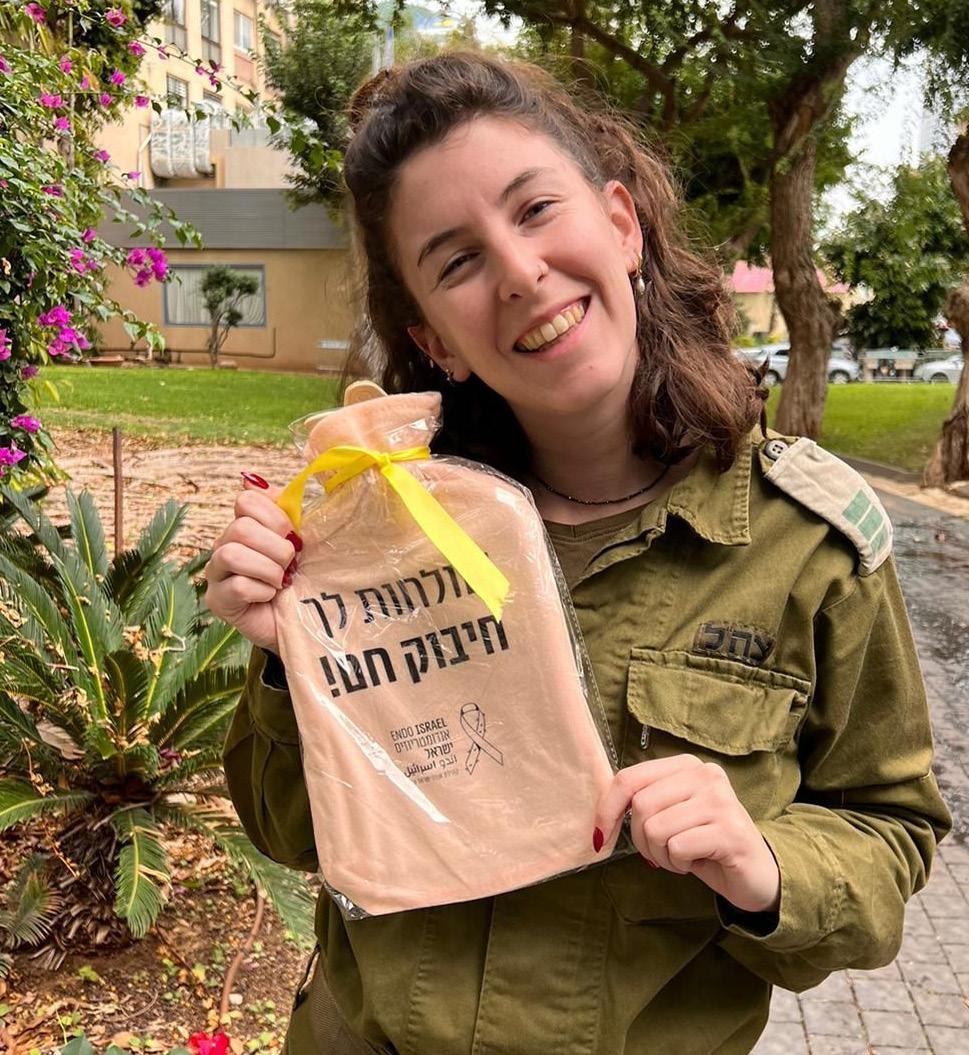
Fostering a closer Jewish community FREE VOL. 87 Tuesday, 12 March, 2024 / 2 Adar II 5784
Living Feature page
28-year-old Shir Shachar is studying in the Faculty of Medicine at Tel Aviv University. With the outbreak of war, the Israeli Defense Forces’ reservist was called up for duty (photo courtesy Tel Aviv University) page 5
Seniors’
10
AROUND THE COMMUNITY
SIMONNE WINECIER JDC
(THE JOINT) AUSTRALIA
On February 24th, Ukraine marked two years of crisis. Two years of bombing, destruction and pain. February 24th also marked two years of people reaching out to help Ukraine’s Jews endure the unbearable.
As you read this, Ukraine’s Jews are sitting through their third freezing winter — bitter wind rushing through bombedout windows, the constant threat of blackouts and heating prices that few, if any, can afford. Prices are rising and resources are dwindling.
Children are facing yet another year without regular schooling, families are struggling and trauma is everywhere.
JDC (The Joint) has been there since day one. With your support, we launched an immediate response to the crisis and adapted it as the conflict barrelled on and needs evolved. Powered by your generosity, we brought food, medicine and winter aid to Ukraine’s Jews.
We evacuated people that wished to leave and helped refugees acclimate to their new homes. We provided –and continue to provide – emotional and physical assistance to the tens of thousands of Jews who remain in Ukraine. As the second anniversary of the crisis is now behind us, the conflict is as intense as ever. Recent weeks have
JUDAICA QUIZ
RABBI DAVID FREEDMAN
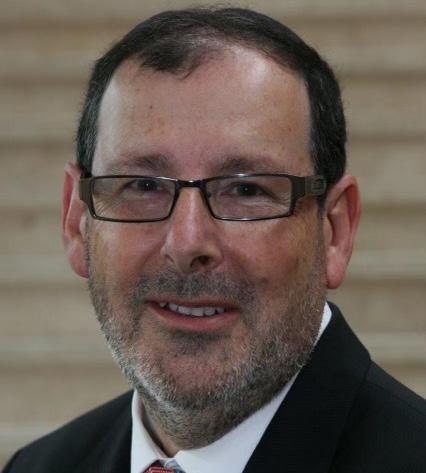
The Purim story played out in ancient Persia and involved danger, drama and the actions of the brave Queen Esther and her wise uncle Mordechai. It involved King Achashverosh’s wicked advisor who had evil plans to destroy the Jewish people.
Long story short: Esther intervened on behalf of all Jews and communicated Haman’s plot. The king reacted and the Jews were saved (yes, all is revealed in much more depth in the Book of Esther).
Today, we revel, we rejoice and we repeat this important chapter of our history. We also dress up in costume –kids and adults alike – and eat delicious triangular-shaped hamantaschen. We send Mishloach Manot, or gift baskets, and give to those less fortunate and sit down to enjoy a sumptuous Purim seudah, or feast. If you are getting together with family for a Purim Seudah, make sure you have a copy of this quiz on hand to read, learn and enjoy, in between sampling different varieties of hamentaschen. Rabbi Freedman has expertly woven questions together within the Purim framework just for you.
1. In a Jewish Leap Year, does Purim occur in Adar 1 or Adar 2?
2. How many times over a cycle of 19 years does the Jewish calendar include a leap month: a) 7 b) 9 c) 11 ?
Two years of crisis in Ukraine
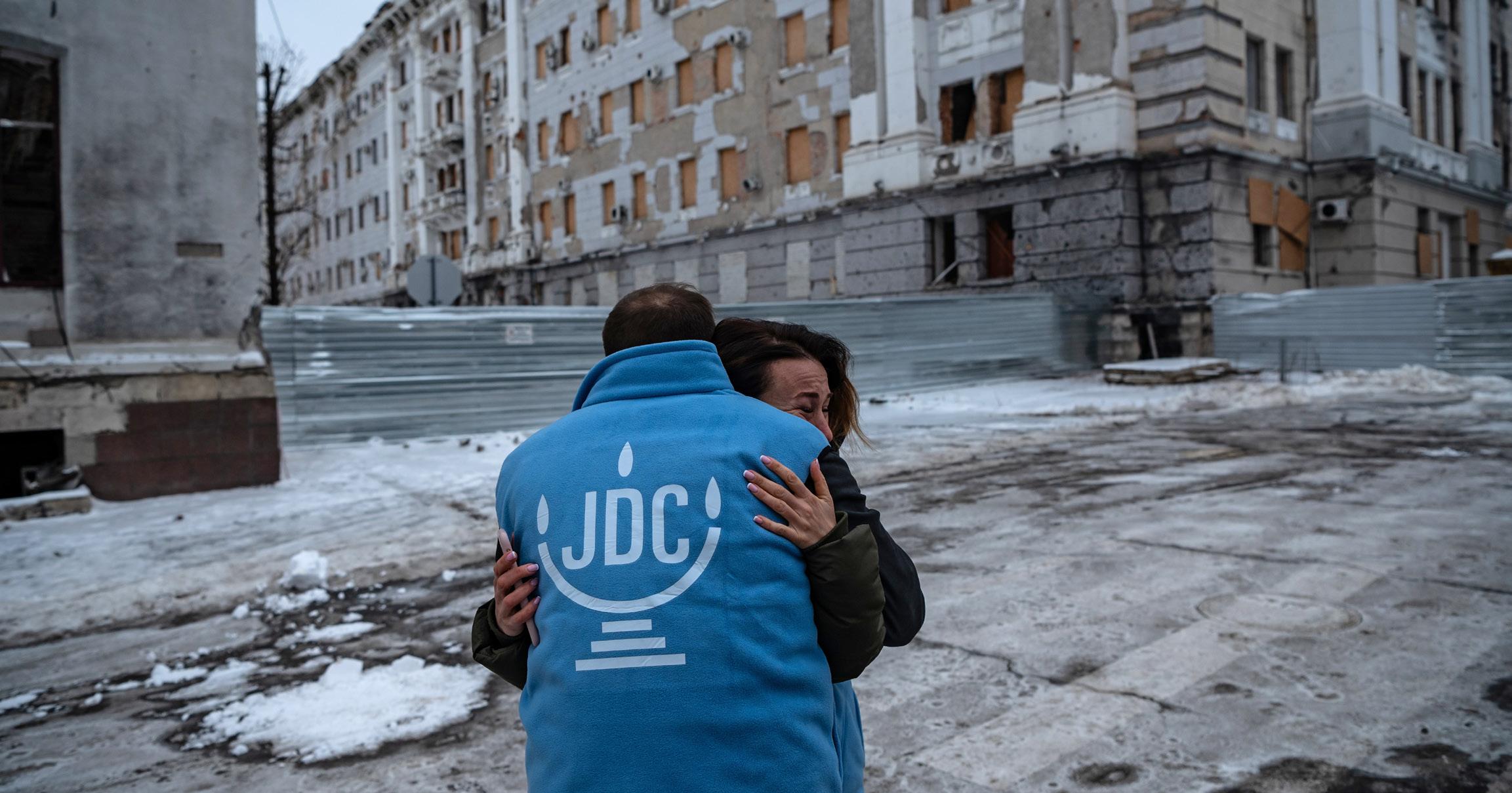
seen severe bombings in Odesa, Kyiv and Dnipro.
JDC (The Joint) staff often come to work in bullet proof vests. Destruction is everywhere. While Ukraine’s Jews remain strong, the war is taking a toll. More than ever, they need to know they are not forgotten.
With your help, we will continue to stand with and assist the Ukrainian Jewish community in the coming year.
JDC (The Joint) Australia aims to provide life-saving material aid to those who need it most.
This means food and medicine for the elderly and newly poor, utility subsidies,
Test your knowledge
3. Why does the Jewish calendar include leap years?
4. Identify the first person and the last person to be mentioned by name in the Book of Esther.
5. On Purim we must read the Megillah (the Scroll of Esther) and perform what other mitzvot?
6. Mordechai was honoured by being placed upon a horse and led through the streets by Haman. What was special about the horse?
11. The Fast of Esther takes place on Adar 13. If that date is Shabbat, when does the fast take place?
12. How did Roman carnivals or Shrovetide influence Jewish celebrations during Purim?
13. What is a Purim Spiel?
14. Give the English translation of these two traditional Purim foods –Hamantaschen and Oznei Haman.
15. Purim Meshulash, the three-fold Purim, is a somewhat rare event.
Good luck. Enjoy. Hopefully, learn something new about the joyous festival of Purim and its traditions..
7. Purim comes from the Hebrew (or perhaps Persian) word pur. What does pur mean?
8. What is the difference between Purim and Shushan Purim?
9. Which tractate or massechet of Mishnah deals with the celebration of Purim?
10. Haman is associated with an archenemy of the ancient Israelites mentioned in the Book of Exodus and again in the Book of Samuel. What was the name of this people:
a) The Philistines b) The Romans
c) The Amalekites, or d) The Moabites?
Affecting the celebration of Purim in Jerusalem, it occurs only in those years when Shushan Purim coincides with Shabbat, as it will do in 2025. Following 2025, when will the next Purim Meshulash occur?
a) 2035 b) 2045, or c) 2055?
16. Many Jewish communities around the world established local "Purims" to commemorate their deliverance from a catastrophe or an antisemitic ruler or edict. One of the best known is Purim Vinz. In which German city did this take place?
warm clothing and fuel to help Ukraine’s Jews survive the winter and ensure that both internally displaced Jews and refugees have the help they need to survive in their new homes.
https://fundraising.thejoint.org.au/ ukraine-emergency-response
17. Purim was banned by the Nazis the day after which fateful event?
18. Nazi criminal Julius Streicher was heard to sarcastically remark "Purimfest 1946". Where was he when he said these words?
19. Which world leader, considered an enemy of the Jewish people, was suddenly paralysed on Purim 1953 and died four days later?
20. Which British actor born in London in 1933 and later made a dame by Queen Elizabeth II in 2015 for her charitable services played the lead role in the 1960 20th Century Fox film ‘Esther and the King’? She is perhaps best known for her role as Alexis Colby in the TV series Dynasty.
21. ‘One night with the King’ was a movie released in 2006. It retells the story of Purim and was based upon Mark Andrew Olsen's novel Hadassah: One Night with the King. Who was Hadassah?
22. Fill in the missing name from this Purim prank from February 24, 2021 (a day before Purim that year). The Jerusalem Post tweeted that Benjamin Netanyahu could not get hold of [insert person’s name here] for one month because the latter deliberately gave him a wrong number.
23. A ra’ashan is better known as a what?
24. During the Second Temple period, there was a Jewish custom to make a public proclamation on the first day of Adar, reminding the people that they should prepare what?
25. According to tradition, which famous biblical character was born and died on 7th Adar?
2 the melbourne jewish report | Mar 2024
ANSWERS PAGE 18
A JDC volunteer embraces a Ukranian Jew in Kharkiv, after she breaks down having witnessed the destruction in the city centre (photo by Arik Shraga)
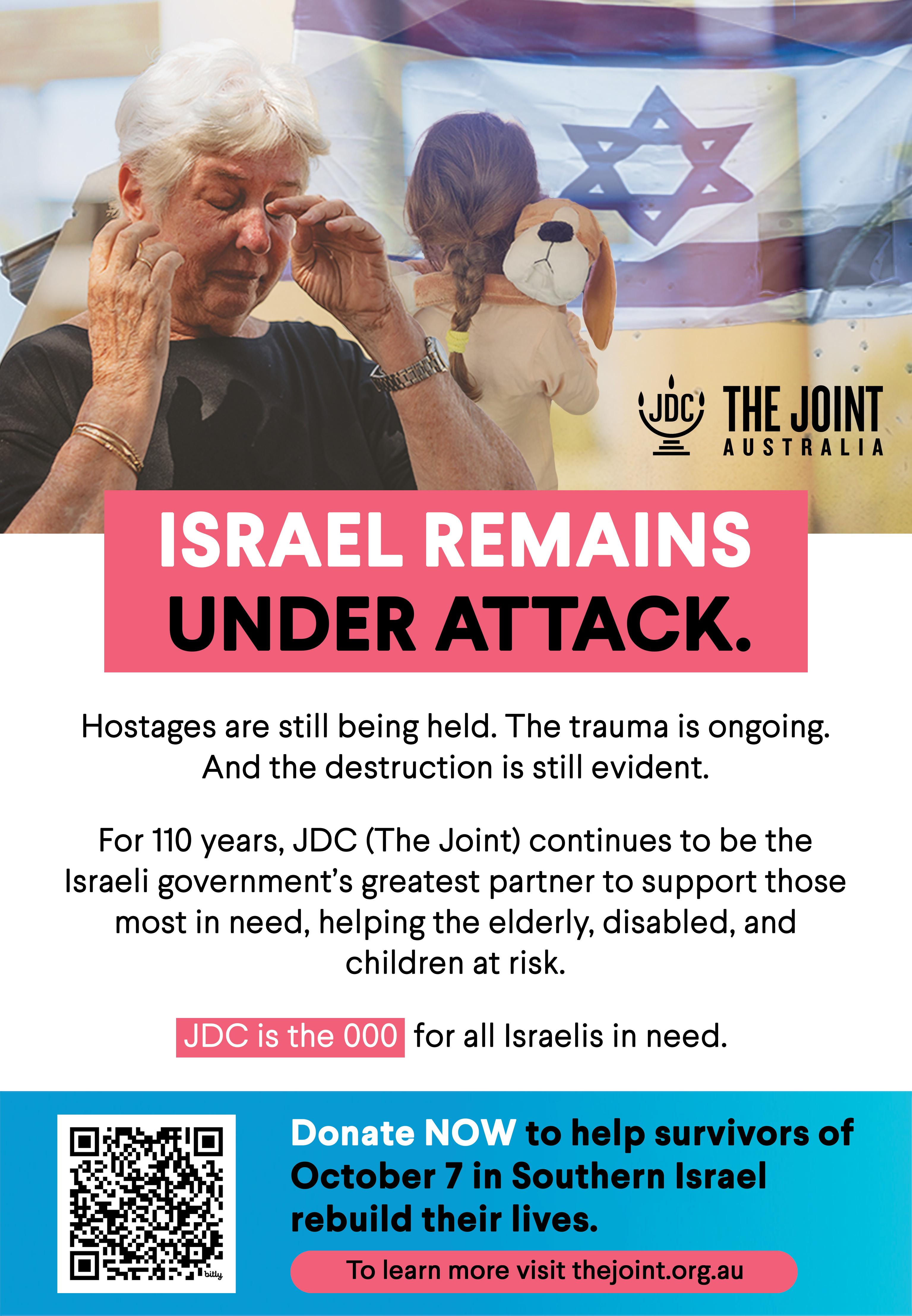 AROUND
AROUND
THE COMMUNITY
ROBERT SCHNEIDER AUSTRALIAN FRIENDS OF THE HEBREW UNIVERSITY
The tragedy of the past few months reminds us that while the Jewish population comprises just 0.2 per cent of the world, our impact and contributions are disproportionately significant. The Nobel Prize is a celebration of excellence and is considered the most prestigious award in the world. It is awarded to “those who, during the preceding year, shall have conferred the greatest benefit on mankind'. Over the last 122 years, 22 per cent of all Nobel Prize winners have been Jewish. Eight Nobel Prizes have been awarded to scientists and academics associated with the Hebrew University of Jerusalem. That is the highest number bestowed to those associated with any Israeli university.
Among the eight is one given to Albert Einstein, one of The Hebrew University’s founders. Einstein, together with Sigmund Freud, Chaim Weizmann and other major Jewish scholars and leaders of the early 20th century founded the Hebrew University of Jerusalem in 1918.
These awards are a testament to the extraordinary work of the university, conducted across six campuses, that has led to ground-breaking achievements. They include treatments for Alzheimer’s disease, Parkinson’s disease and ovarian cancer, agricultural advancements,
A tradition of excellence

new perspectives on the legal system, politics, and society, cutting edge technology for smart vehicles and eyesight restoration, to name but a few. All have contributed to improving life on Earth.
The Hebrew University brings together top researchers from all over the world and is actively involved in the most innovative research conducted on an international scale. State of the art research centres, laboratories and facilities are part of what has enabled Hebrew University-affiliated researchers to register more than 10,000 patents and
to successfully commercialise numerous innovations.
Pivotal to the “Start-Up Nation”, the Hebrew University has incubated more than 180 start-ups. Professor Asher Cohen, President of the Hebrew University said that "In recent years, the Hebrew University of Jerusalem has become a significant catalyst for companies across a wide range of verticals. There is no doubt that the knowledge and tools that students acquire here will help them build technologies that will benefit all humankind, with a special focus on sustainability and battling climate
change.” One of these rising start-up stars is Believer, a food-technology company pioneering the first scalable lab-grown meat production system that can feed the world. Founded in 2018 by Hebrew University’s Professor Yaakov Nahmias, Believer's mission is to ensure that future generations can enjoy the meat we know and love in a costeffective and sustainable manner.
Believer’s trajectory and innovation is one of countless success stories to come out of the Hebrew University. The same Professor Nahmias is also a pioneer in humane medicine, having established a company called Tissue Dynamics to simulate human physiology on a microchip, thus lessening the need to have to conduct experimentation on animals. Tissue Dynamics focus is on ethical and cost-effective drug development.
Students from all around the world including Australia can access many exciting opportunities at the Hebrew University, including exchange programs, summer courses and full-time study in English. For more information, please visit The Australian Friends of The Hebrew University at austfhu.org.au.
The University may be located in Israel, but more than a century since its establishment its work continues to transform our global landscape on a scale far greater than its founders could ever have imagined.
Neta was injured in the Kfar Gaza massacre –a new Technion invention helped her walk again
On the morning of October 7 in Kfar Gaza, Neta Portal and her partner Santiago Peres's tranquillity was shattered by the blare of sirens, signalling the start of a nightmare.
As hours went by, the reality of their situation became terrifyingly clear. Amidst explosions and the ominous news of a potential terrorist infiltration in their kibbutz, Neta and Santiago sought refuge in their home's safe room, a decision that would prove lifesaving. Their ordeal escalated as their apartment was targeted and they found themselves under direct fire. Santiago sustained injuries trying to protect them, while Neta was also struck by several bullets.
Both Neta and Santiago survived, injured but hidden, until they were rescued by Neta’s father, Shimon Portal, who is a deputy chief superintendent in the Israeli police force.
The aftermath of the attack left Neta grappling with severe injuries, particularly to her left leg, which bore the brunt of the assault. Her road to recovery began at The Loewenstein Rehabilitation Medical Center, where the complexity of her wounds posed a significant challenge. The traditional methods of rehabilitation were not viable due to the nature of her injuries. It was imperative that she find a way to walk without putting weight on her damaged ankle, to prevent further harm and promote healing.
Enter Dr Dana Solev from the Technion’s Faculty of Mechanical Engineering, who, alongside Dr Amir Haim from The Loewenstein Rehabilitation Medical Center, embarked on developing a custom orthotic device that would allow Neta to walk again. This device, a marvel of engineering and compassion, was designed to offload weight from the injured ankle, transferring it to the shin and thus enabling Neta to maintain mobility without compromising her recovery. The device was a testament to the power of innovation in the face of the unique challenges doctors in Israel experience. Using 3D scanning and computational design, the team at Technion tailored the brace to fit Neta's precise measurements, ensuring optimal comfort and effectiveness. This personalised approach not only facilitated Neta's physical rehabilitation, but also heralded a new dawn in the treatment of such injuries.
Neta's journey from the brink of despair to the threshold of recovery is a story of resilience, a testament to indominable spirit overcoming adversity. The collaborative effort between medical professionals and engineers at Technion underscores the potential of interdisciplinary approaches in solving complex health challenges. As Neta takes her first steps towards a new beginning, her story serves as a beacon of hope for others facing seemingly insurmountable obstacles, proving that innovation, courage and perseverance can pave the way for healing and renewal.
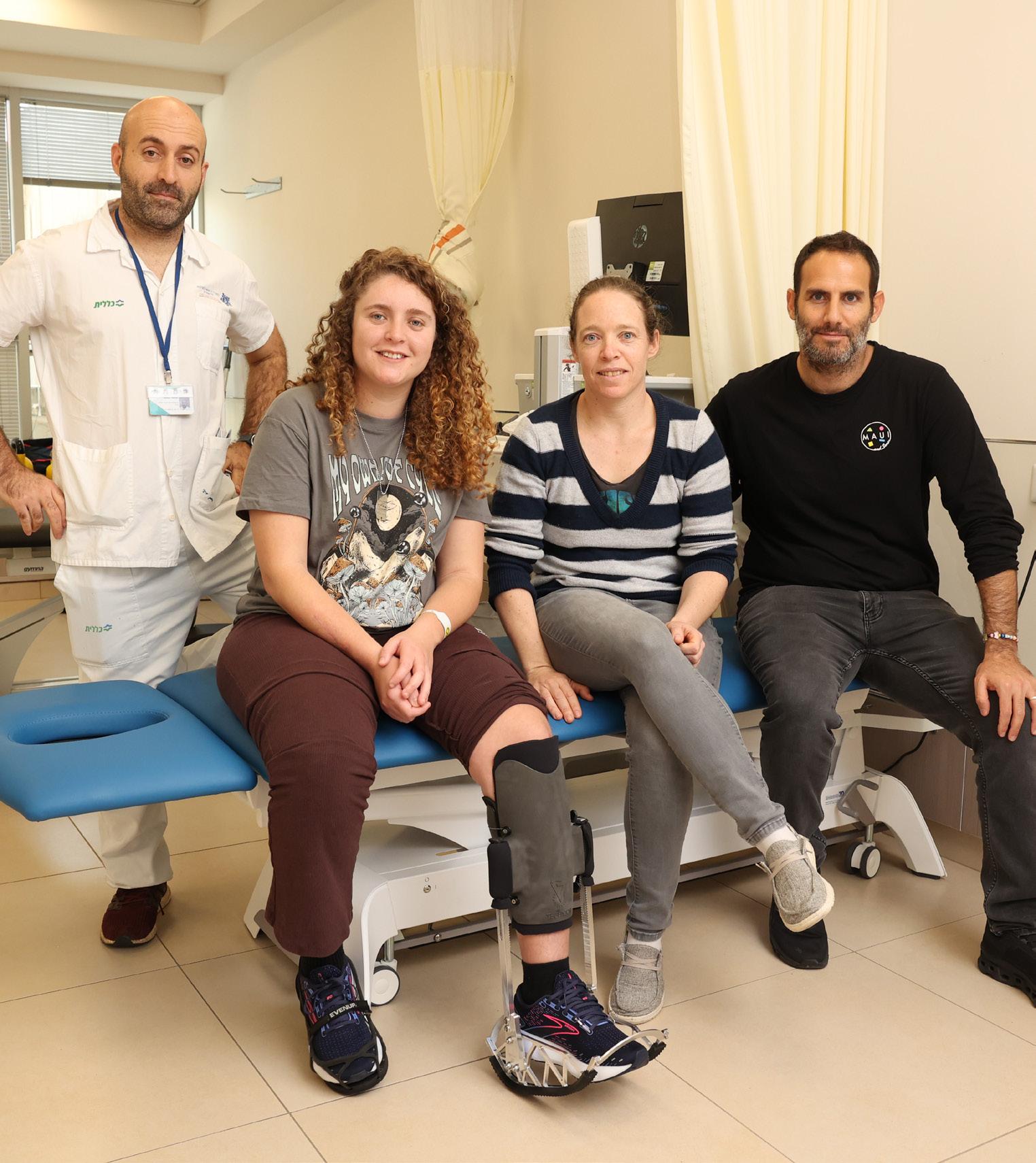
4 the melbourne jewish report | Mar 2024
Hebrew University’s Professor Yaakov (Koby) Nahmias with his microchip
TECHNION AUSTRALIA
From left: physiotherapist Ahmed Mawase, Neta Portal, Dr Dana Solav from Technion’s Faculty of Mechanical Engineering and Lee Jordan, laboratory engineer
DAVID SOLOMON AUSTRALIAN FRIENDS OF TEL AVIV UNIVERSITY
New data from Tel Aviv University (TAU) –with 30,000 students, Israel’s largest and most diverse university – reveals a major change in women's contribution to the war effort compared to the past. One of every three reservists on campus is a woman.
In the first months of the October 7th war, 6,657 TAU students were called up for reserve duty in the IDF. This is more than 22 per cent of the total student population. Of this number, 2,228 were women – 34 per cent of the total. Moreover, in January 2024, after most reserve soldiers had been discharged, 2,545 TAU students including 755 (29 per cent) women, remained in active service.
By faculty, the composition of the 2,228 female reservists is as follows: 481 from the Faculty of Medicine, 394 from Engineering, 373 from Life and Exact Sciences, 308 from Social Sciences, 167 from Law, 100 from Humanities, 96 from Management, with the rest from other units. Professor Neta Ziv, vice president for Equity, Diversity and Community at TAU, applauded the reservists on campus. "Women's great contribution is apparent in all spheres of life: the military, the public and, of course, the civic arenas. TAU acknowledges and honours the contribution of female reservists and does everything in its power to help all students who served or are still serving in the reserves to successfully resume their studies in this challenging academic year."
The University has determined that all students called up for reserve duty are entitled to a grant based on their needs, as

Women playing a changing war role
well as the type and length of their service. The grants express TAU's appreciation, as well as the understanding that when these students return, they will need to concentrate on their studies, with little time left for work. These heroic young people stopped their lives, their studies and their dreams to protect Israel. TAU believes it is its duty to free reservist students from anxieties about missed studies and work, as well as ensuring that they can smoothly and fully resume their lives once they return from combat. In previous military operations, this kind of help made all the difference for students that might have otherwise lost a semester or an entire academic year.
TAU has launched the Uniform to University Scholarship Fund to help reservists transition from the battlefield back to campus. Assistance will come in the form of scholarships to be allocated as tuition discounts, housing aid or for emergency expenses, personalised academic tutoring to catch up on missed course material, complete assignments and succeed in exams, and subsidised psychological counselling for treating anxiety, depression and other forms of trauma.
Shir Shachar, 28, is studying for a Master's degree in the Faculty of Medicine: "I was called up for reserve duty right after the war broke out and served as a researcher in the Ground Forces' Learning Unit. Our team included both men and women, with each of us contributing significantly to the common war effort. The commitment, dedication and determination of all reservists to their tasks, whether in the field or behind the lines, is very important to success in combat. Only by working together, with everyone doing all they can, can we win the war."



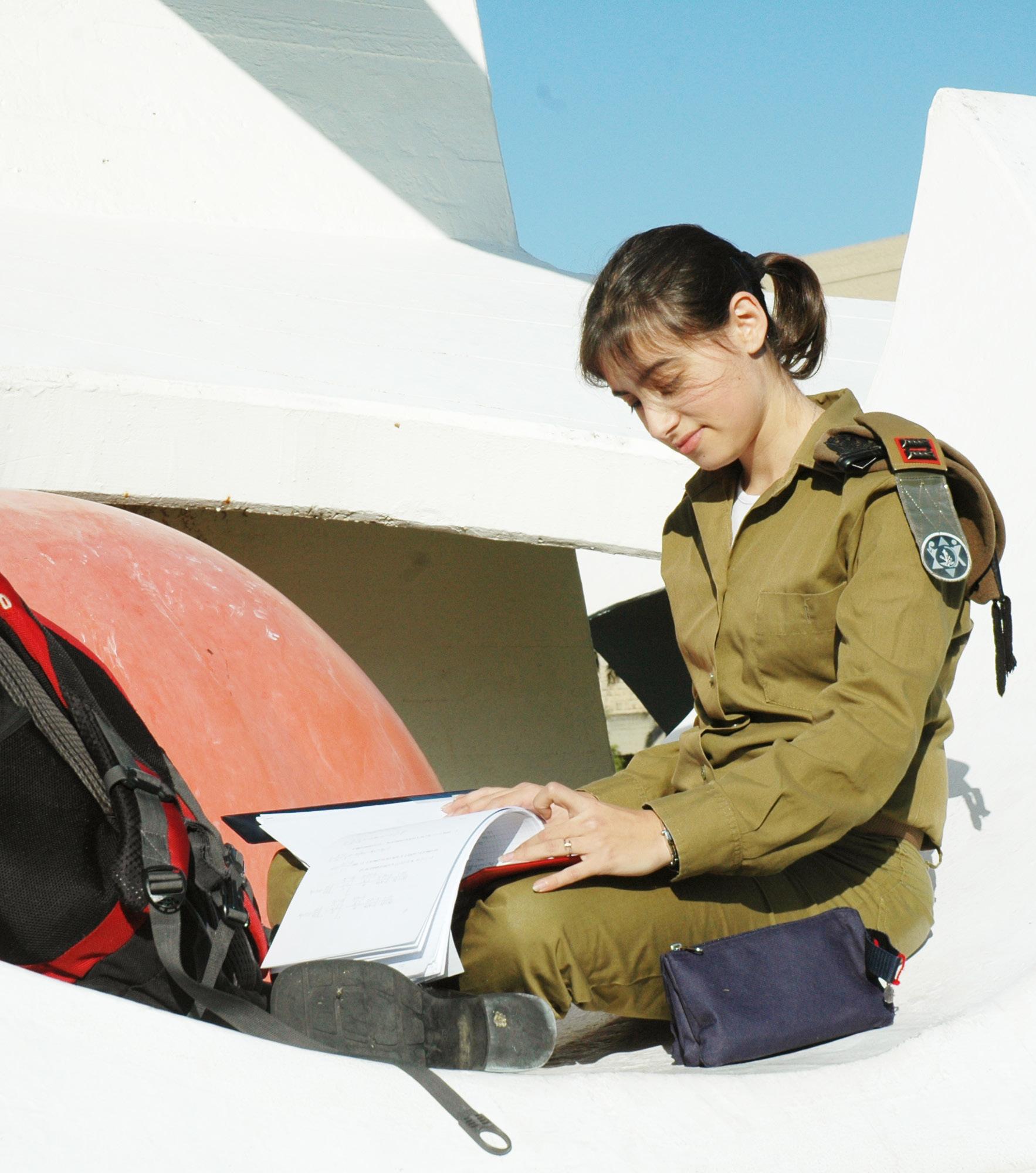

Duty called and they came - now help fulfill their calling.








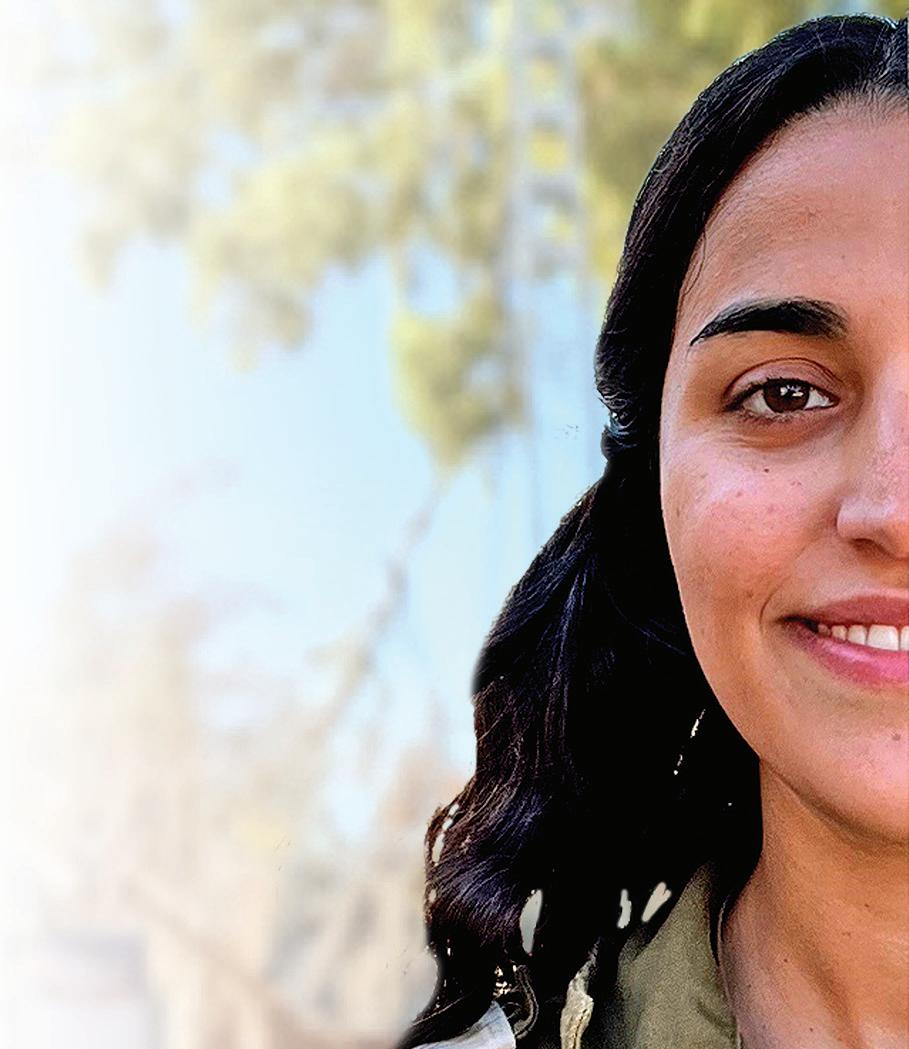
When duty called, they came! Now, it’s up to us to help them return to classworry-free - and become the bright future of Israel. The moment the war broke out Israel re-enlisted its reservists and over 6,600 of them are Tel Aviv University students. They already completed their regular IDF duty and are now in a different chapter in their lives: the one where they study to make their dreams and goals a reality. It’s up to us to ensure that our returning students, our heroes, have the academic and financial assistance they need to succeed in their studies. Help our students follow their true calling.

Support TAU’s Uniform to University Scholarship Fund.
“These are tough times and we assist as much as we can. I’m looking forward to returning to studies and with a little help, will be able to pursue my dreams.” – Carmel aftau.asn.au


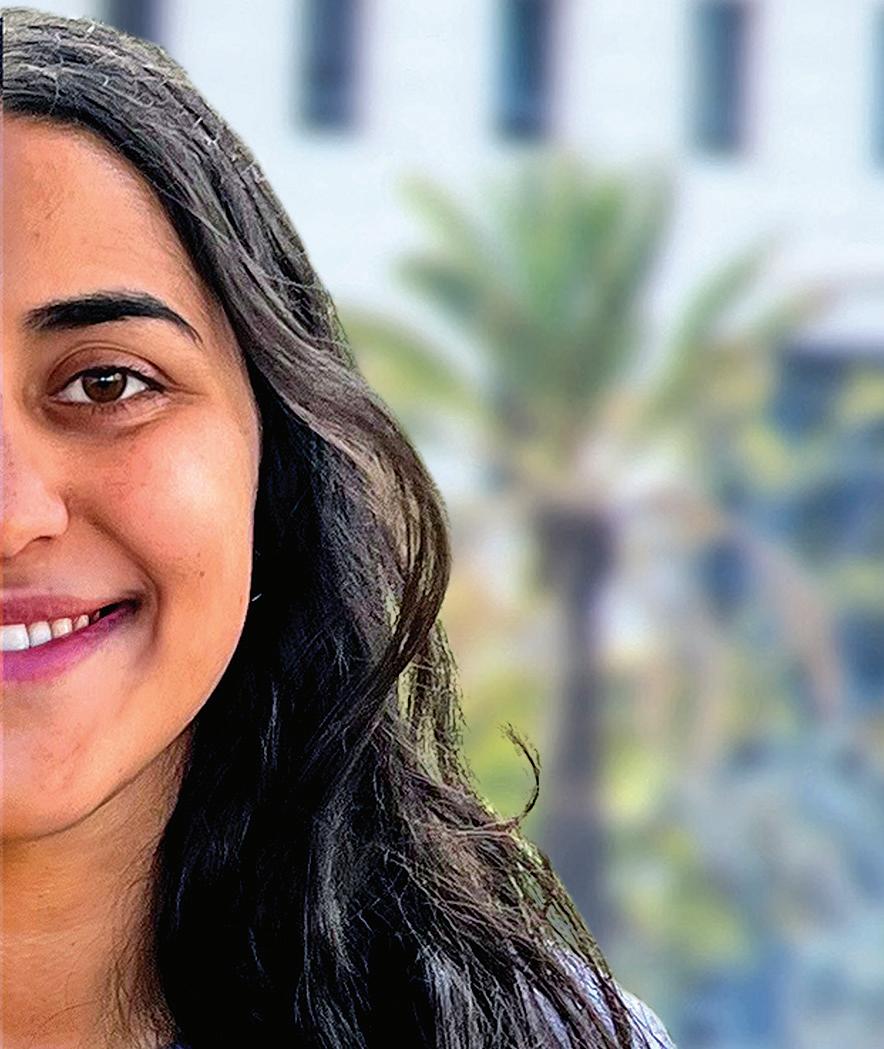




5 the melbourne jewish report | Mar 2024
AROUND THE COMMUNITY
Tel Aviv University student reservist Shir Fuchs squeezing in study while on active duty
ROBERT GREGORY AUSTRALIAN JEWISH ASSOCIATION
Since the October 7th Hamas attack on Israel, Australians have been confronted by shocking news. The stories out of Israel are horrendous. Most of the victims of the October 7th attack were Israelis, but the terrorists showed no mercy to anyone. Among the 1,200 murdered were citizens of Nepal, Sri Lanka, the Philippines, Thailand and, even, Tanzania.
Another shocking development has been the hatred playing out on Australian shores. Days after the attacks, a mob chanted antisemitic chants at Sydney’s Opera House. Activists have specifically targeted the neighbourhoods where Australian Jews live. Convoys waving the Palestinian Authority flag have targeted Caulfield in Melbourne and Bondi in Sydney. Australia’s multicultural fabric is being tested like never before.
Australia’s Jewish community is tiny. It has never comprised more than half a percent of Australia’s population. Jews came to Australia on the First Fleet, but the community is overwhelmingly an immigrant community. The largest growth came with refugees fleeing the Holocaust. It has been strengthened by more recent, successive waves of immigrants, including those from the former Soviet Union and South Africa.
The Middle East conflict is disrupting Australia’s’ multicultural harmony
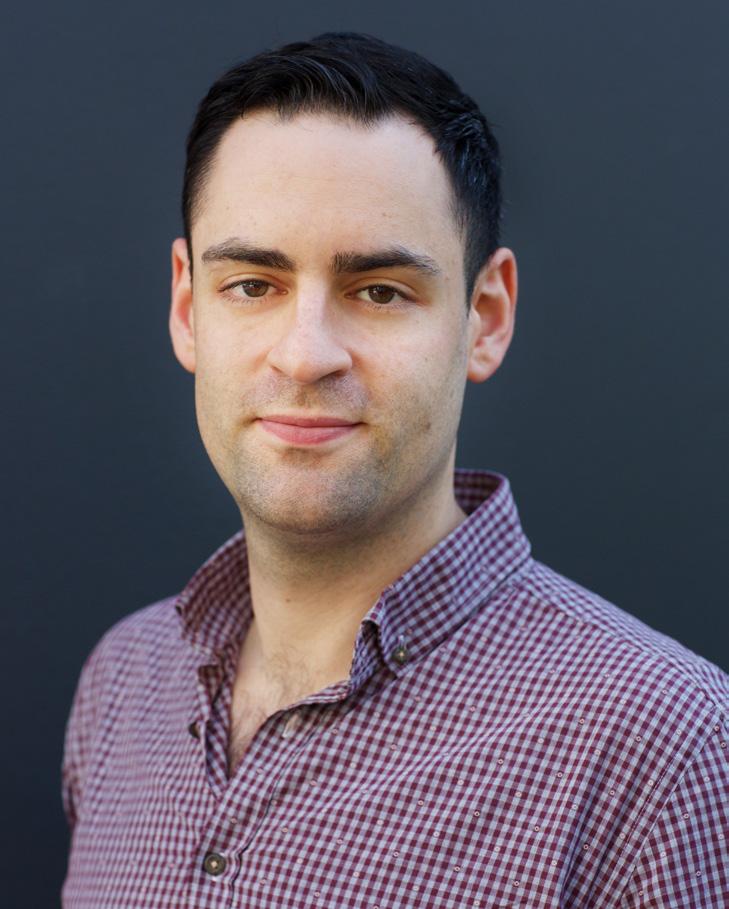
Jews have been incredibly successful and contributed greatly to Australia. The Australian Jewish community has produced multiple Governors General, military leaders, a federal Treasurer, Chief Justices, a Premier, accomplished businessmen and women, scientists and thinkers.
Australian Jews have won the Nobel prize, the Archibald Prize, Olympic Gold
and just about every honour for Australia. Businesses founded by Australian Jews are ubiquitous. Many Australians would interact daily with places like Westfield, Myer, Meriton, Spotlight, Chemist Warehouse and Kogan.
Now, many in the Jewish community are feeling very unsafe. Antisemitic incidents are up an astounding 738 per cent since October 7.
The Australian Jewish Association has received threats and we work closely with the police. For the first time I hear some members of my community questioning whether they have a future in Australia. This should worry all Australians.
The Australian Jewish community has been touched by the response from many communities. We have received messages of support from the Hindu, Assyrian, Kurdish and many other communities.
Those who show the most understanding have often experienced terrorism and religious extremism themselves.
Unfortunately, not all parts of the community have behaved honourably. Chief among the instigators is the Australian Greens. This political party pretends to promote tolerance, but
really fuels hatred and division. They can often be found at the scene of disgraceful antisemitic incidents. The NSW Greens promoted the antisemitic Opera House protest. NSW MP Jenny Leong spoke about “Jewish tentacles”.
Federal leader Mehreen Faruqi was forced to delete an image she posted of the Jewish Star of David being placed in a garbage bin, alongside the words “keep the world clean”.
Antisemitic incidents at the Opera House and outside a Caulfield synagogue not only cause tensions in Australia, they also risk damaging our reputation abroad.
AJA is calling on all political parties to pledge to preference the Greens last. Some prominent people, including former Foreign Minister Alexander Downer and Liberal MP Julian Leeser have made the same call, but we have yet to see Labor act on this. Those spreading hate must be held responsible, otherwise Australia’s multicultural harmony will come under major strain.
A shaliach’s impressions from O-Week: as the threat grows, so do we
TOBIAS SIEGAL AUJS SHALIACH
As anti-Israel rhetoric and antisemitism become increasingly rampant on campuses across the world, Jewish students feel more threatened than ever and are naturally drawn to a sense of community they wouldn’t otherwise actively seek.
This became evident to me during my visits to nearly a dozen campuses throughout Australia and New Zealand during the month of February for Orientation Week (O-Week). I witnessed first-hand the challenges Jewish students are facing and the coping mechanisms upon which they rely.
During my visits to AUJS stalls in Sydney, Melbourne, Adelaide, Perth and Auckland, I encountered numerous incidents of verbal abuse, Israeli flags being ripped down and torn, and constant gestures and smirks that would make anyone feel vilified and unwelcome.
While more incidents were reported in Melbourne and Sydney, smaller regions face the same challenges, while often lacking the resources and support to tackle them. In Adelaide, “Free Palestine” pins were left on our designated table before we got there. In Perth, a student came to our stall and confidently stated, “Israel has killed more people than Nazi Germany did.” I would not have classified this as an incident if that student had not been on
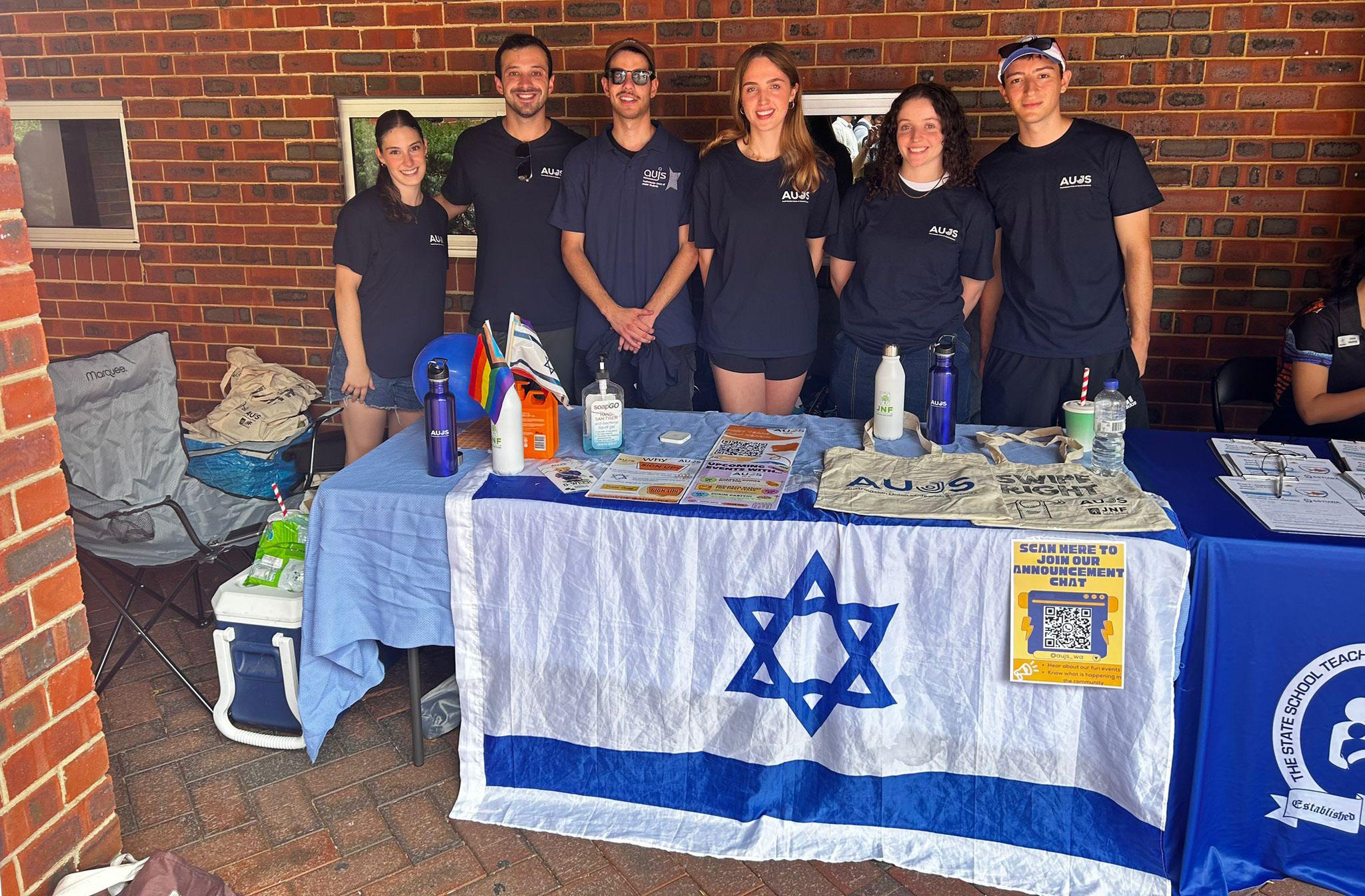
the university’s student guild – the main body on that campus that is responsible for representing all students on campus.
And in Auckland, the Auckland University campus was riddled with posters that read: “Zionists are not wanted here”, alongside a picture of a local Jewish lecturer.
While campuses in Melbourne and Sydney are more receptive to their relatively large number of Jewish students and are more inclined to take
adequate action to ensure their safety, that is not always the case in the smaller regions.
And still, it’s not all bad. Despite the many challenges, the situation is not as dire as we feared it would be. Not yet, at least. The threat should not be underestimated, of course, but I did encounter many incidents that left me more optimistic than I was before departing on my month-long journey. The vast majority of the non-Jewish students
who I met were not as invested in the war as one would expect. Many curious students came up to ask reasonable questions about the situation and were genuinely interested in a discussion. Others were looking to learn more about Jewish culture and Hebrew, and did not bring up Israel or the war at all.
What I found most encouraging was the significant number of new sign ups that we got. At this point last year, AUJS had 543 membership sign ups, while this year we are already at 917.
That is an increase of nearly 70 per cent. AUJS New Zealand doubled its membership from 40 to 80, many of whom were Americans on student exchange programs, who said they were extremely relieved to see a Jewish student society on campus.
But the fight is far from over. March has been dubbed “March for Palestine” month by many pro-Palestinian groups and friction on campuses will undoubtedly continue to increase. In many ways, O-Week has provided Jewish students with a relatively safe space.
With less security and monitoring by universities, unfortunately more incidents are likely to occur. But as the threat grows, so do we, and so does our commitment to supporting Jewish students everywhere.
6 the melbourne jewish report | Mar 2024
Jewish students and the AUJS shaliach Tobias Siegel (second from left) at the AUJS stall at Curtin University in Perth, February 2024
AROUND THE COMMUNITY
AJA CEO Robert Gregory
Keren Hayesod-UIA (KH-UIA) provides affordable, sheltered housing for seniors in need across Israel through “Amigour” – one of the four KH-UIA national priority projects. Today, more than 7,500 seniors, including Holocaust survivors, enjoy independent living through Amigour, which has become one of Israel’s leading operators of public and sheltered housing.
There are approximately 180,000 Holocaust survivors living in Israel. One in three of them live below the poverty line. The situation is also particularly dire for immigrants from the former Soviet Union, who lack financial resources and an adequate network of family and friends.
Rina, 65, has been living at Amigour for the past five years, having made Aliyah from Uzbekistan’s capital, Tashkent, then part of the Soviet Union. Her mother fled from Ukraine to Uzbekistan during WWII. “Amigour for me means security,” said Rina. “Emotional security, financial security, psychological security.”
Security is something Rina desperately needs, especially in the wake of the October 7 massacre. Her memories of that horrific day are still clear and terrifying. “I woke up to rocket sirens,” she said. “And then I heard the Prime Minister declare that the State is at war. I learned
A life of dignity and security through Amigour and UIA
there were terrorists in Ofakim, through a text I received from my daughter.”
Rina lived to tell the tale, but her neighbour, Igor, unfortunately did not. “To our great sorrow, he fell victim to this horrifying massacre. A holocaust unto itself – the black Shabbat. ”In the wake of these atrocities, and thanks to UIA’s valuable donors’ support, Rina received exceptional care from the staff at Amigour. “We had visitors. And then we began receiving food donations,” Rina said. Rina is fortunate to have KH-UIA to support her through her senior years, particularly during this difficult moment in history as the war in Israel continues to rage. Unfortunately, not all elderly Israelis are as lucky. Despite the assistance provided by KH-UIA donors, the need for housing is ongoing. There is a waitlist for Amigour. Some 90,000 low-income seniors live under the poverty line in Israel, which faces a critical shortage of low-rent public housing.
A Gift in a Will is a powerful way for UIA donors to support the future of Israel’s vulnerable seniors.
For more information, contact Estelle Wytwornik on 9272-5533, email Estelle. wytwornik@uiavic.org.au or go to uiaaustralia.org.au
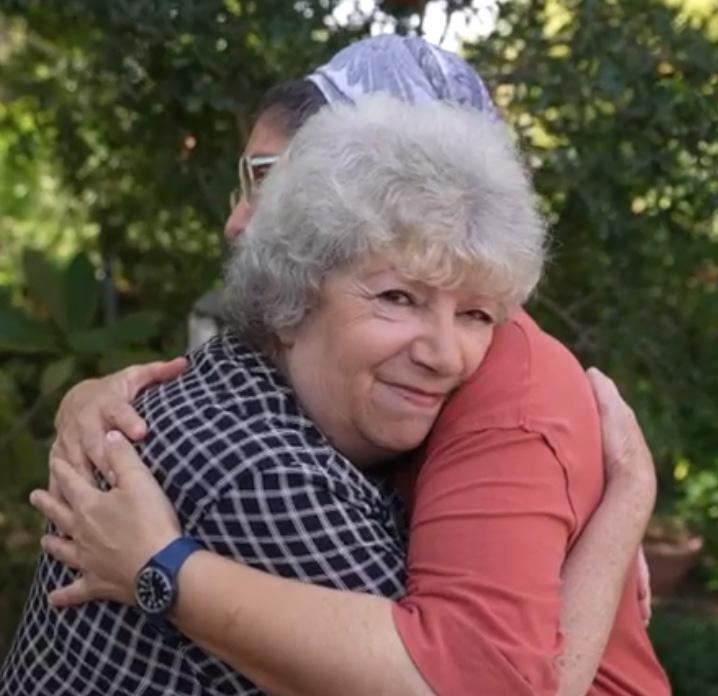
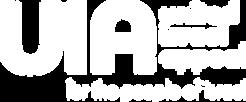
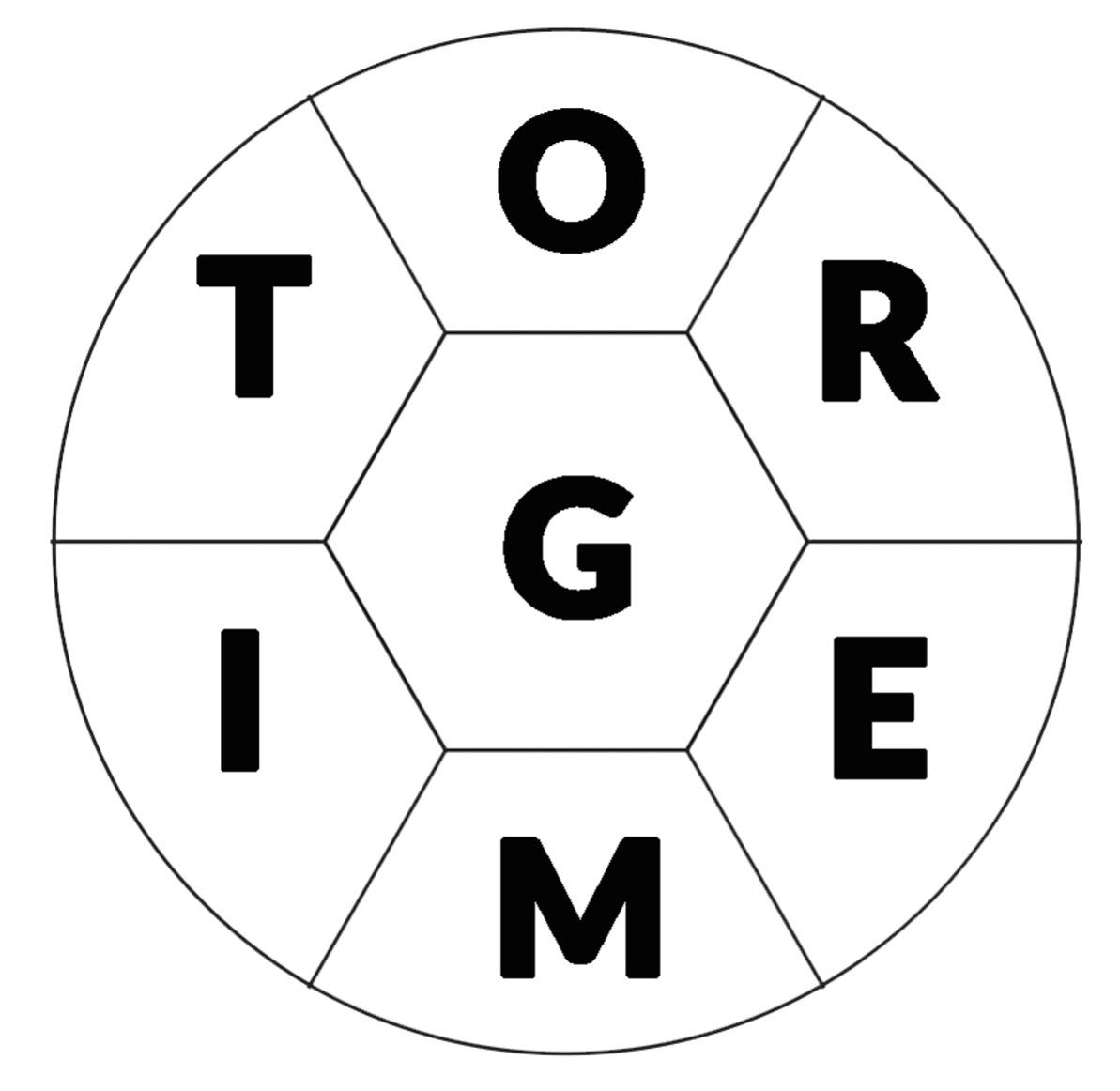

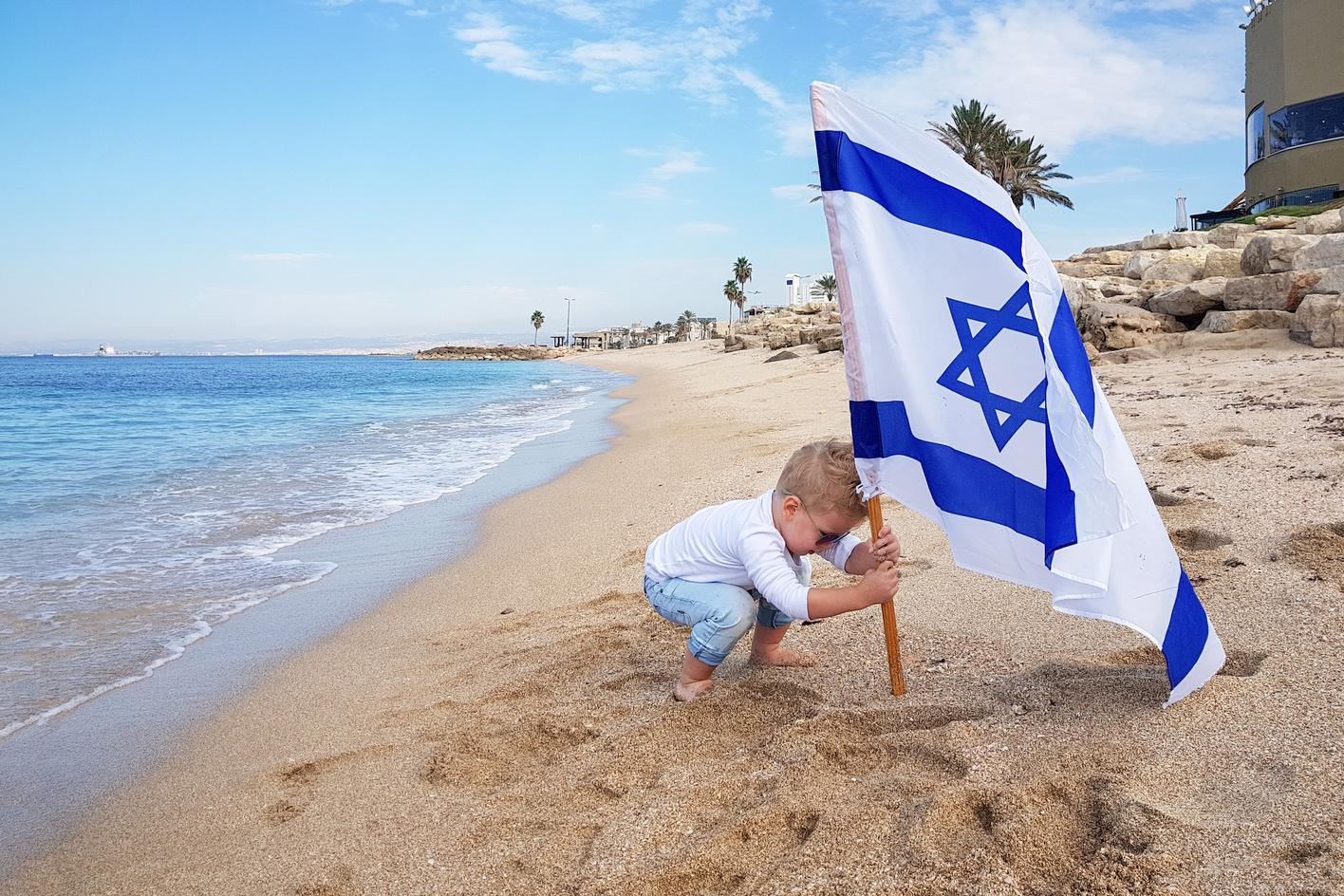
7 the melbourne jewish report | Mar 2024
UIA AROUND
THE ISRAEL YOU'VE ALWAYS BELIEVED IN BECAUSE WE'LL ALWAYS NEED IT Consider a gift to Israel in your Will through UIA For a confidential discussion, contact Estelle on 9272 5533 or estelle.wytwornik@uiavic.org.au ANSWERS PAGE 18 How many common words of 5 or more letters can you spell using the letters in the hive? Every answer must use the centre letter at least once. Letters may be reused in a word. At least one word will use all 7 letters and have a direct Jewish connection. Proper names and hyphenated words are not allowed. Score 1 point for each answer and 3 points for a Jewish-related word that uses all 7 letters. Rating: 15 = Good; 20 = Excellent; 27 = Genius
Glatt has published more than 1,000 crossword puzzles worldwide, from the LA Times and Boston Globe to The Jerusalem Post. He has also published two Jewish puzzle books: "Kosher Crosswords" and the sequel "More Kosher Crosswords and Word Games".
THE COMMUNITY
Yoni
PAUL MARGOLIS
Paul Margolis is a New York City-based photographer and writer who has documented Israel and the Jewish world for many years.
His projects have included reporting on Jewish poverty in New York, as well as the small Jewish communities of Cuba and Ireland.
His work has appeared in Jewish publications in the U.S. and Israel.
He travels to Israel regularly to photograph everyday life in the country.
Manhattan, USA post October 7
While Paul has accepted digital photography, his preferred medium is black and white film, shots taken on his Leica rangefinder cameras, which he processes and prints himself.
Paul was in Israel when the war broke out on October 7. He photographed reservists being mobilised and the distribution centres that were organising supplies for communities in the South.
Here The Jewish Report presents a selection of images Paul took in Manhattan between October 2023 and last month.
To see more of his work, go to: www. paulmargolis.com
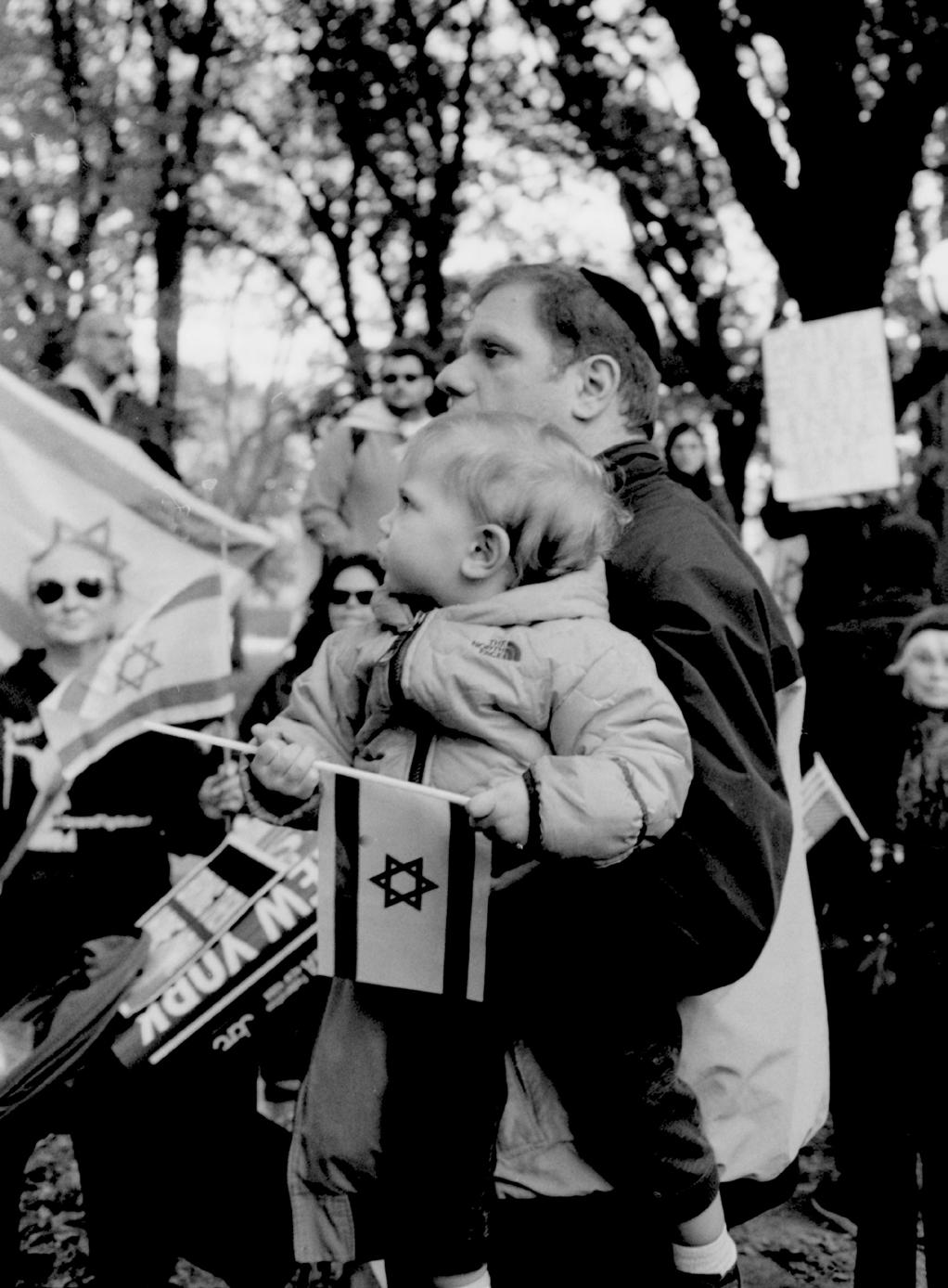
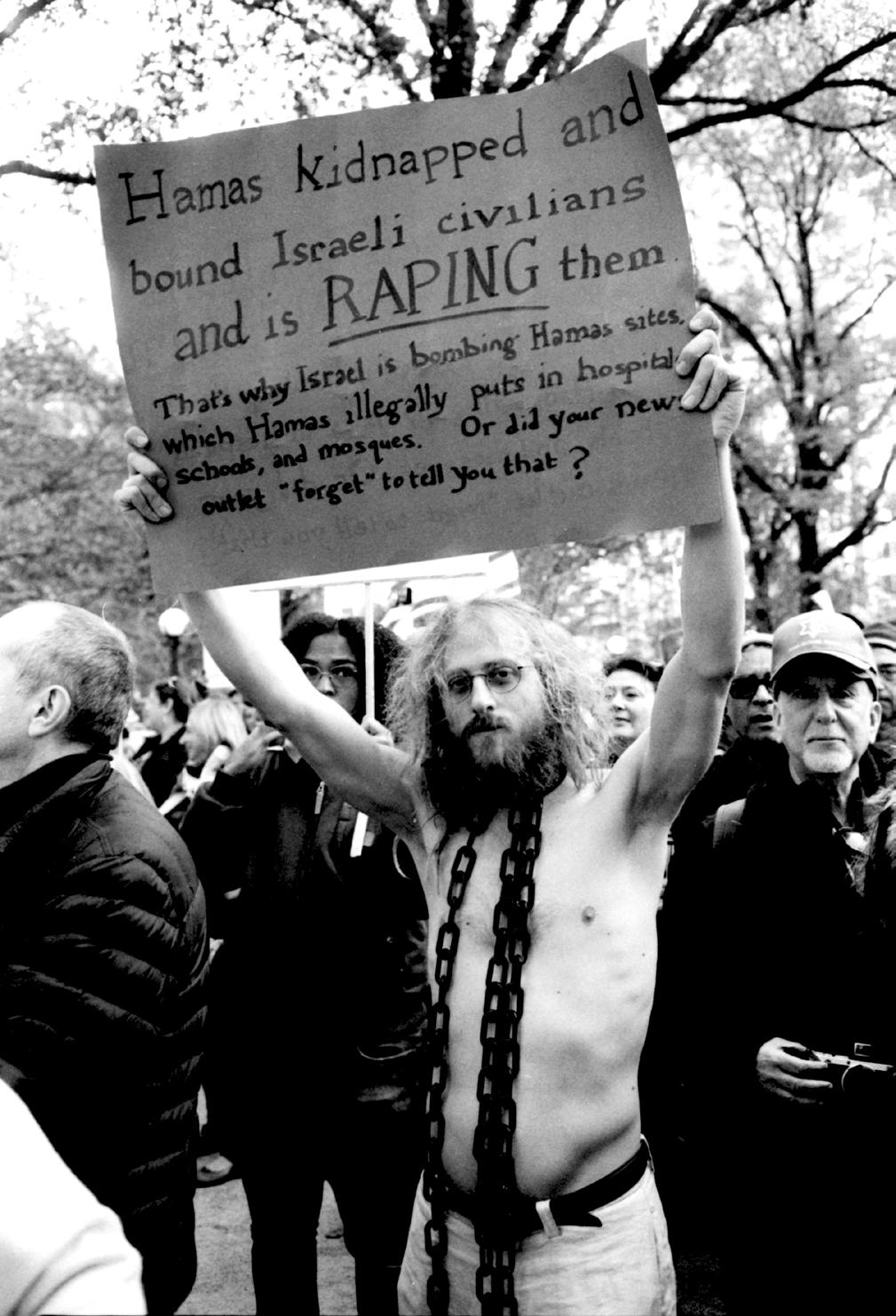
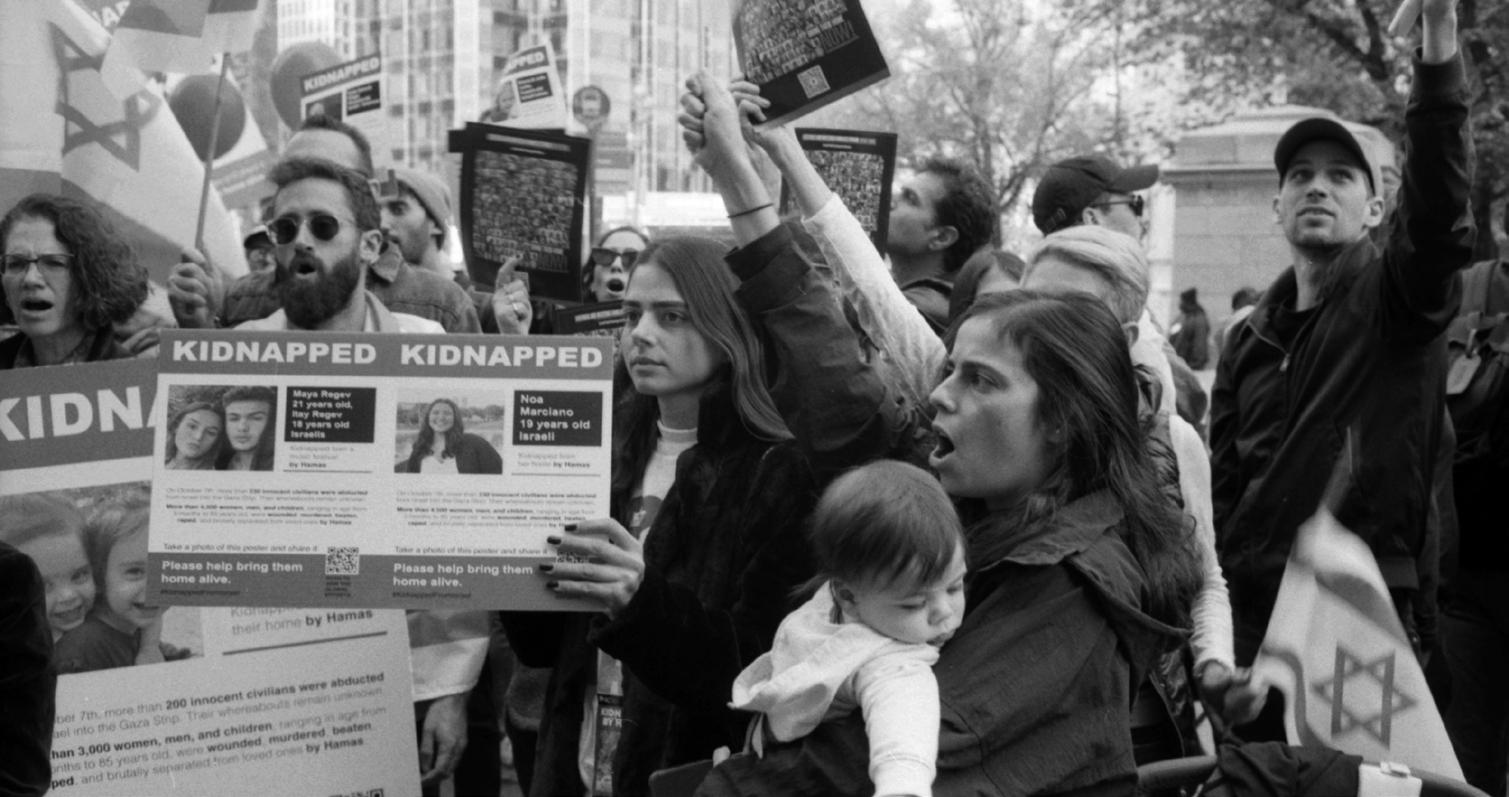
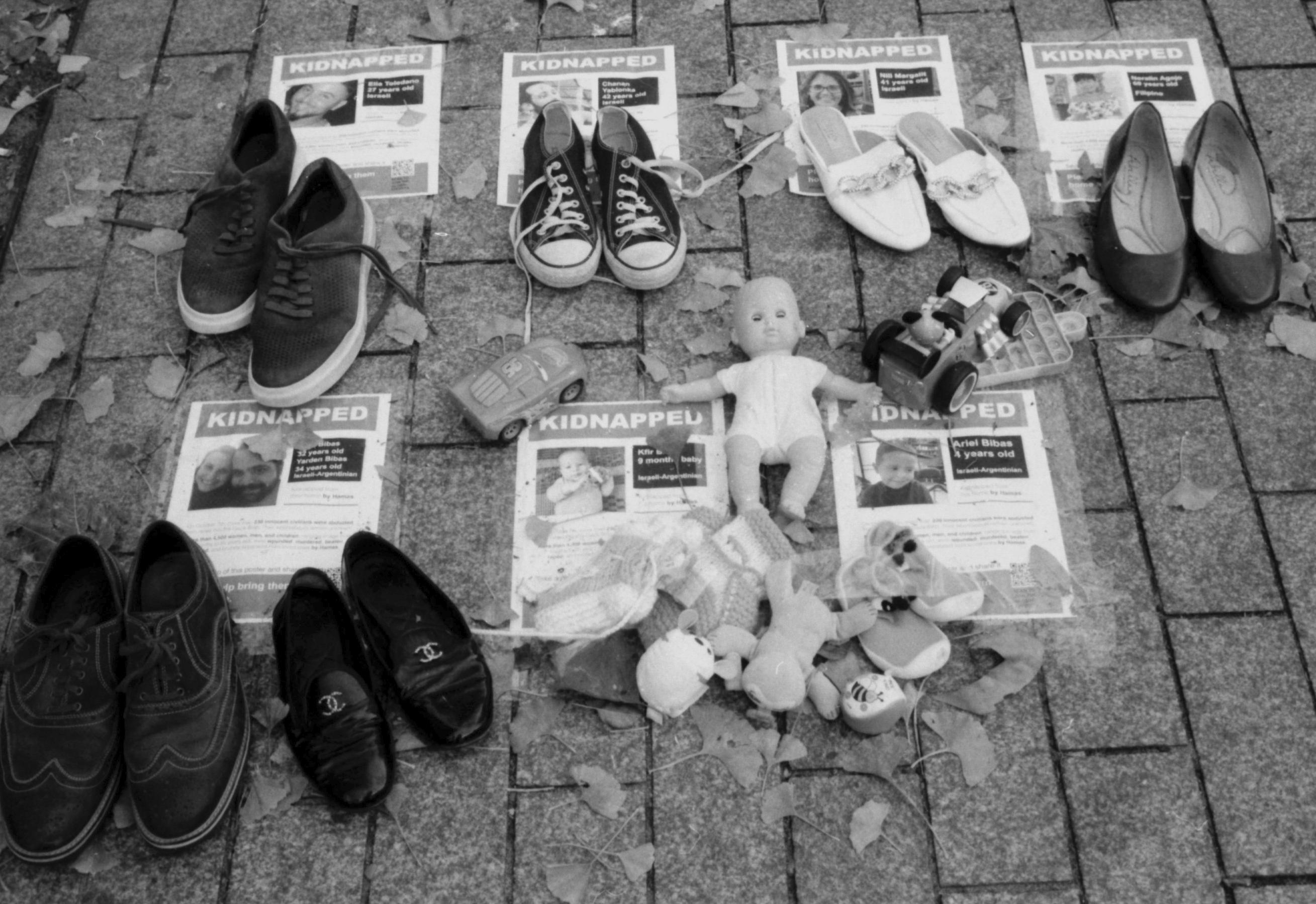
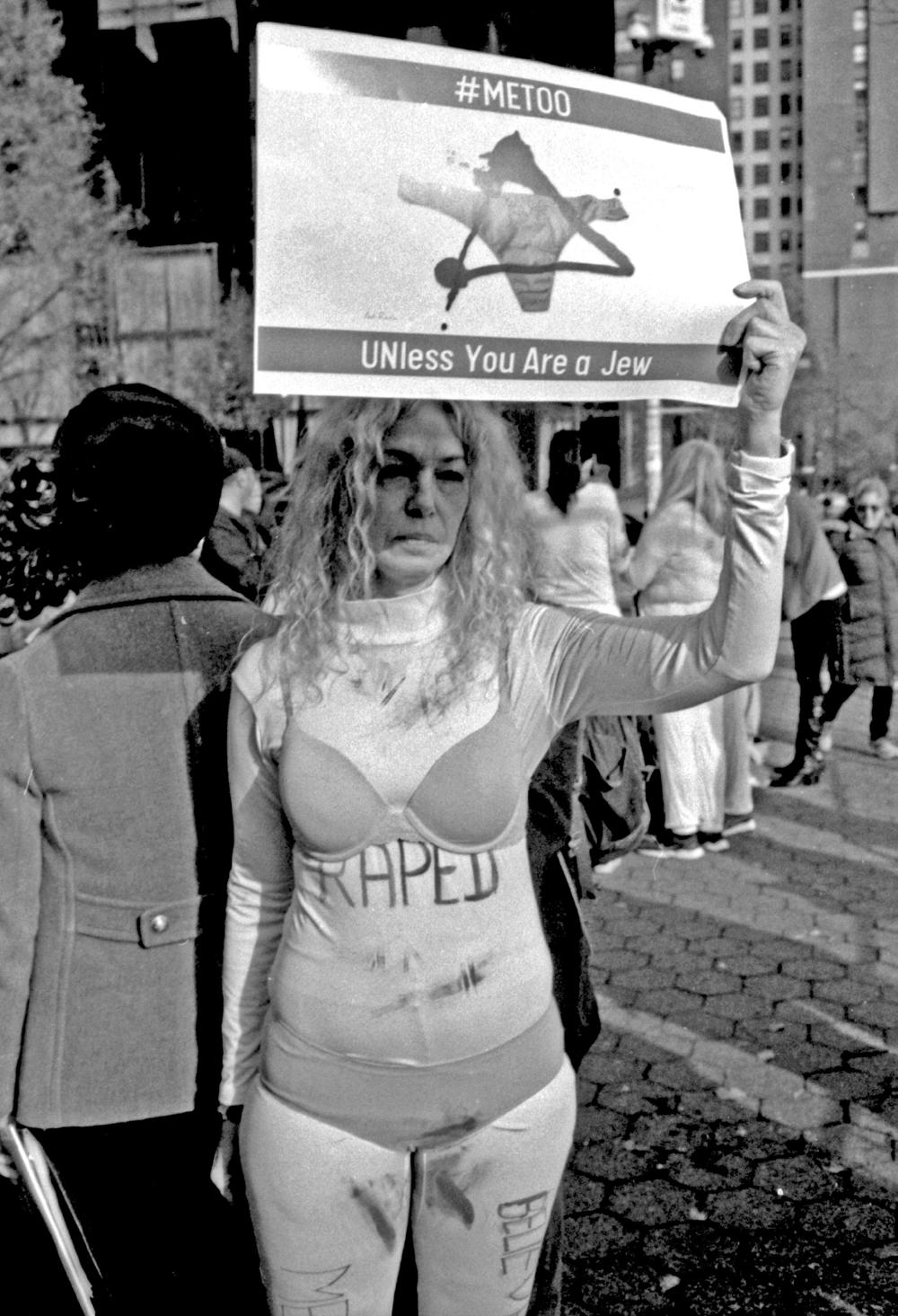
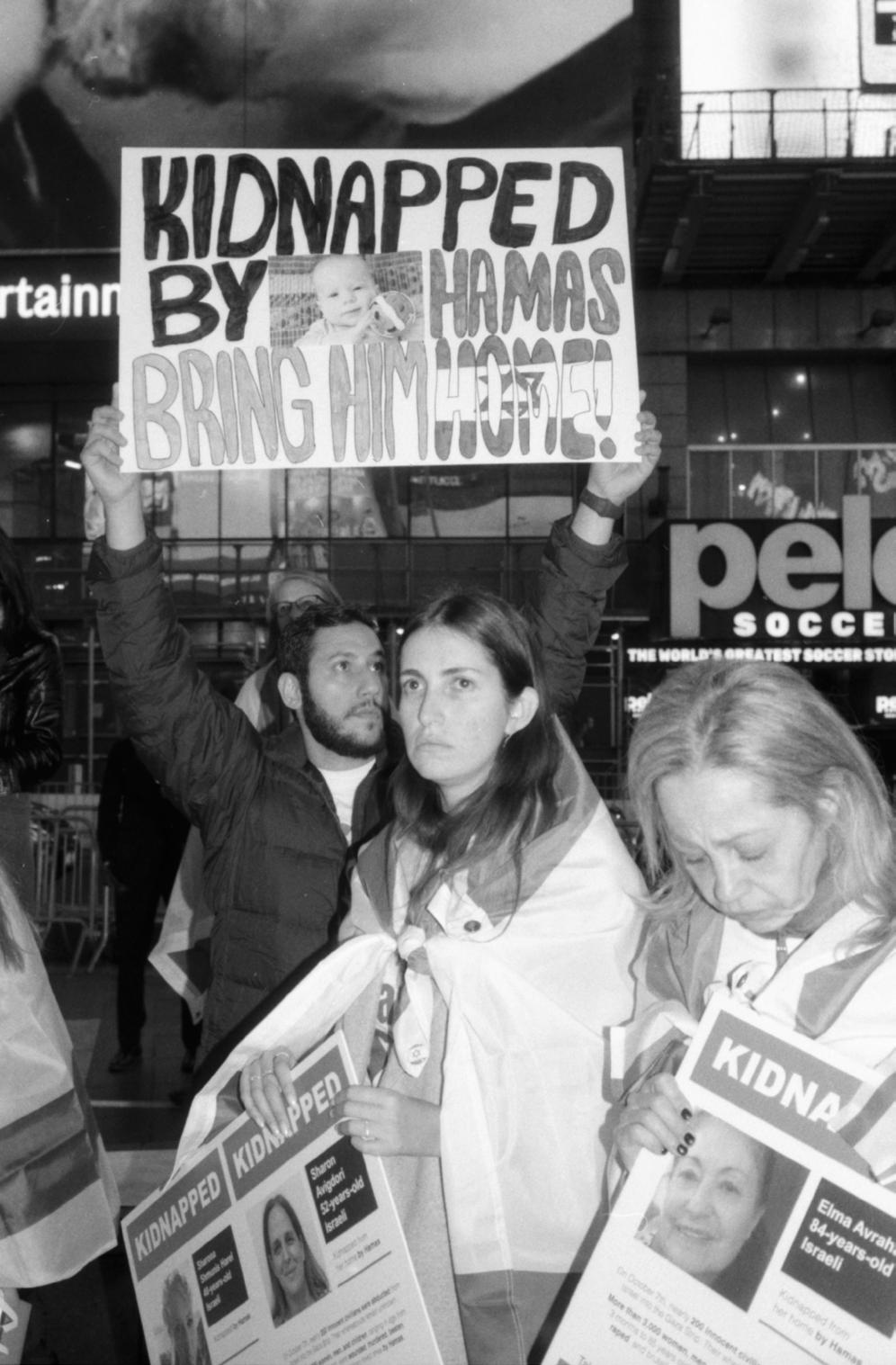
8 the melbourne jewish report | Mar 2024
Rally for the hostages during the New York City Marathon
A father and son at a hostage rally in midtown
An evocative display at 66th Street and Broadway
A demonstrator at a free the hostages rally in midtown on a chilly November day
A demonstrator standing in front of the United Nations building, protesting the abuse of women
INTERNATIONAL JEWISH NEWS
A demonstration in Times Square
AROUND THE COMMUNITY
NOMI KALTMANN COURTESY: TABLET MAGAZINE
Jews have dedicated prayers to the welfare of reigning monarchs since biblical times, when Jews exiled from Jerusalem to Babylonia reached out to the Prophet Jeremiah for guidance on navigating their relationship with their new rulers. In the British Commonwealth, Jews in modern times commonly incorporate such prayers into Shabbat services, expressing hopes for the king’s or queen’s well-being.
A unique manifestation of this practice can be seen at the Ballarat Synagogue. The synagogue proudly displays two sizable wooden plaques, featuring the prayer for the monarch’s well-being, one inscribed in Hebrew and the other in English, commemorating Queen Victoria’s Golden Jubilee in 1887.
Ballarat rose to prominence during the mid-19th century after gold was found there in 1851, igniting a gold rush. Over the next year, the city drew approximately 90,000 people from around the world. At the peak of the gold rush, between 1852 and 1853, Ballarat stood as the world’s wealthiest alluvial goldfield.
The city attracted Jews from England who were seeking their fortunes as well as other European Jews who were escaping antisemitism. In 1853, a minyan was established on the Ballarat goldfields for the High Holidays and by 1859 the town boasted a Jewish community with more than 300 men. In 1861 it consecrated its synagogue. I’ve always had a personal interest in the synagogue because my great-greatgrandparents moved to Ballarat from America in the 1800s as part of the gold rush and are buried in the large Jewish section of the Ballarat cemetery.
After 162 years, the Ballarat Synagogue continues to host a monthly Orthodox Shabbat service, which includes a prayer for the well-being of the British monarch.
“It’s been my synagogue since I was a kid,” said Ballarat Synagogue president John Abraham, whose family moved from North England to Australia in the 1800s and settled in Ballarat during the gold rush. “My father was on the board for many years and was treasurer. My grandfather and my great-grandfather were also on the board. My greatgrandfather was one of the first married in the shule.”
The founders of Ballarat Synagogue were a diverse group: miners, businesspeople supplying the mining community and participants in the 1854 Eureka Stockade. Charles Dyte, a key figure in the Stockade, was also a founding member of the Ballarat Synagogue, highlighting the interconnected roles that Jews had in shaping Australian history.
Ballarat Synagogue is the oldest continuously used synagogue on Australia’s mainland (Tasmania’s two synagogues, in Hobart and Launceston, predate it by a few years.). The synagogue has five Torahs, including one from the 1850s.
Yossi Aron, who has written books focusing on the history of Jews in Australia, told me: “Ballarat was a very important community. At one stage, it was the frummest community in
The gold rush shule
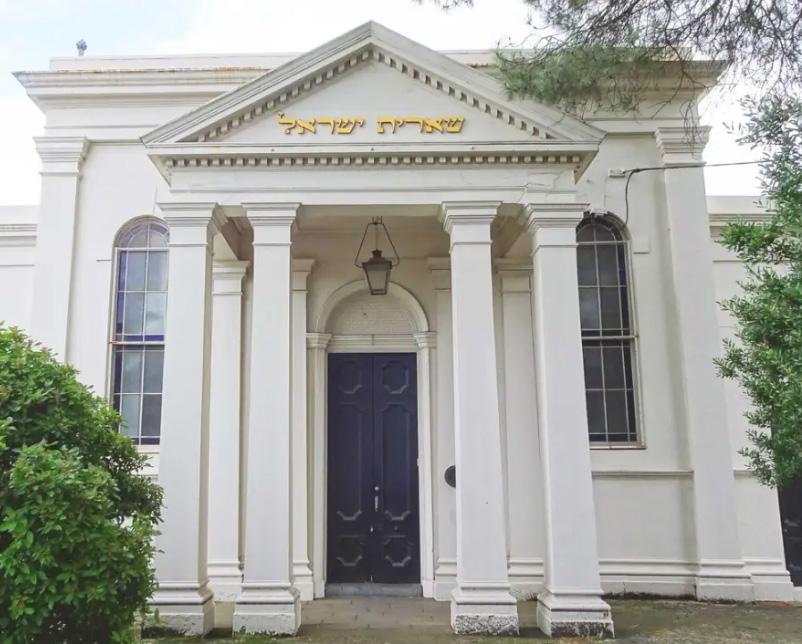
While there were Jewish miners involved in digging for gold in Ballarat, a significant number chose to provide services to the mines. “There were some Jewish miners, but the work was a bit hard for European Jews,” said Aron. “They became the providers. People came to Ballarat looking to make their fortune, but some decided it would be better to be the wagon drivers, the people who brought in the merchandise that they sold at profitable prices to the miners.”
During the initial decade of the gold rush, a quarter of Ballarat’s shopkeepers were Jewish, among them members of the Ballarat Synagogue. It was such a vibrant community that it employed a rabbi. But it’s been decades since the synagogue has had a permanent rabbi – since 1943, said Abraham.
Today, Abraham resides in the former rabbi’s residence, located next door to the synagogue, a property he purchased from the synagogue nearly two decades ago, ensuring that his family’s ongoing engagement with a historic building continues.
“After the last rabbi finished, the rabbi’s residence was rented out for nearly 60 years,” he said. “Nearly 20 years ago, the board finally came to the conclusion that without spending lots of money, which we didn’t have, we needed to sell it. It hasn’t been used by the shule [for a rabbi] in 60 years.”
The Ballarat Synagogue is currently going through a renaissance. While for many decades it was only open on High Holidays, about 15 years ago Max
Lasky, a Melbourne resident, began coordinating monthly Shabbat services at the shule. It’s not just local Jews who attend these services; Jews from farther afield in the wider goldfields region – in the cities near Ballarat that also had gold rushes, such as Bendigo – will pop in for services, as well as occasional Shabbaton groups from Melbourne. I visited the synagogue recently for one of these Shabbatons and the pews were full.
“There is heritage in Ballarat [and it’s nice] to just sit there and reconnect to the gold rush. It’s quiet and its peaceful, there’s meaning and it gives me a chance to express my Yiddishkeit,” said Lasky. With capacity to seat a few hundred, there are 40 paid members at the synagogue. “There are not many Jews living in Ballarat, a couple of big handfuls, but we have a big diaspora that have connections to the shule,” said Abraham. “They come back quite often.” Last year, the main synagogue sanctuary underwent extensive renovations, the synagogue’s first major facelift in more than 100 years. The $300,000 plus renovation included a grant from Heritage Victoria. Additionally, private donors and Jewish foundations, primarily from Melbourne, contributed to the restoration. That included new carpets, a fresh paint job and repairs to the bimah and the chandelier. An arborist also inspected the 160-year-old Canary Island pine tree outside the front of the building, planted in 1867 by the great-grandfather of a current synagogue member.
In March 2023, when the renovations were completed, the synagogue hosted
a rededication ceremony to celebrate the revamped building. More than 100 people attended, many with personal and historical ties to the synagogue. “One of my objectives when I first came into this job [as president] was to keep the shule alive,” said Abraham. “It’s stronger now than it’s been in a long time.”
The synagogue is actively strategising for its future, with Mark Schatz, the current treasurer, focused on planning further restoration efforts. This includes the Paul Simons Function Hall, situated on the same property as the Ballarat Synagogue, but in a separate building. Schatz received word from Heritage Victoria last November that the hall has been accepted into an initial stage of heritage listing, opening the door for additional heritage preservation efforts at the synagogue in coming months.
“We would like to try and have a future fund, so that we know in 15 to 20 years the synagogue’s future is secured, ” said Schatz. “We are interested in restoring the building, not changing it.”
The synagogue committee and broader community know the importance of preserving such a historic and important building. “Once these places are gone, they don’t come back,” said Schatz. “I think that the Hebrew congregation in Ballarat during the times of the goldfields were important contributors … to civil life. I think that for that reason the shule needs to be maintained, so that the impact that the Jewish community has on the goldfields’ region continues to be recognised.”
9 the melbourne jewish report | Mar 2024
Australia. The Beit Din of Victoria even sat in Ballarat.”
Ballarat Synagogue before the restoration (courtesy Flickr user Denisbin)
SENIORS’ LIVING FEATURE
Home Care
The Jewish Report spoke with Jewish Care’s Home Care Customer Engagement Manager, Shane Lazzarotto, about the breadth of its Home Care services.
Tell me about Home Care. Who is it suitable for and how does it work?
Anyone 65 years of age or older may be eligible for government subsidised Homecare.
Jewish Care has dedicated resources, the specific goal of which is to assist in guiding anyone through the process of applying for funding and explaining how Jewish Care’s Home Care services can support them in living a happier and more active life.
For those that haven’t gone on this journey before, what would you like them to know about the process of signing up to Home Care?
Beginning the Home Care journey can be quite daunting, complex and confusing.
Jewish Care’s “Client Onboarding Coordinator” removes this burden entirely and fully supports people through the entire process, making the whole journey quick, simple and carefully tailored to meet individuals’ specific needs.
What if someone wants to change or add Home Care services?
Jewish Care’s Contact Centre is open every day of the year and can quickly respond to all service requests. If you have a Home Care Package, you are also provided with a direct contact number for your dedicated Support Coordinator who can quickly and effectively

mandated and a percentage of the daily subsidy.
However, Jewish Care does not charge a basic daily care fee or an exit fee.
Who are the people that deliver the Home Care? Are they accredited?
Jewish Care largely employs its own support workers, under the “BlueStar” banner. This provides assurance that the help and support you receive in your home is high quality, personal and suitable for your individual lifestyle and culture.
Employing BlueStar staff gives Jewish Care confidence that whenever one of its carers enters your home, they are fully trained and qualified.
Is there anything else people should know before signing up to Home Care?
Home Care means different things to different people. Jewish Care can assist you with cleaning your home, garden maintenance, showering, meal preparation, transport to medical appointments and, even, your weekly shopping.
respond to any change in your needs or circumstances – for instance, whether it’s to begin having ready-made meals delivered or if you would like to start regular physiotherapy sessions. Your Support Coordinator is always readily available and happy to assist, advise or guide you.
Can you give us some indication as to the costs involved?
The costs really do depend on the type of funding you qualify for. For Home Care packages, every provider must charge a care management and package management fee each month. These fees are government

More than that, Jewish Care has two Active Living Centres (ALC), in Windsor and Caulfield, that help you stay connected to your community. They are places where you can participate in group activities, such as Zumba classes, concerts, discussion groups, games or simply socialise … with lunch included, every day of the week.
For more information on Home Care packages, call 8517-5999. If you are interested in attending an Active Living Centre, call 85175409 or email activelivingcentre@jewishcare. org.au
JEWISHCARE
Sometimes all you need, is to get out and have some fun. For more information, call 03 8517 5999 or visit www.jewishcare.org.au From your own home, to getting out and about, we are here to support you in living your best life, for longer. With our Community Aged Care, enjoy in-home support tailored to your needs. Simple, everyday support done well, that can really make life a little more luxurious. Everyone is welcome. We Offer: • Personal care • Home cleaning • Escorted shopping • Transport to appointments • Companionship • High quality meals • Support with gardening DATE 22.02.2024 JOB SIZE 185mm(h) x 260mm(w)
Jewish Care’s Active Living Centre team. From left: Nelli Khoroshina, Candis Herr, Vincenzo de Paolis, Vitalii Tymush, Alla Korneyko and Jan Howie
Residential aged care
The Jewish Report spoke with Jewish Care’s Residential Aged Care Admissions and Engagement Manager Jessica Suraci to find out more about the residential aged care services that the organisation offers.
Who is eligible for residential aged care (RAC)?
You may be eligible for government-funded aged care services if you are 65 years of age or older (50 years or older if you identify as an Aboriginal or Torres Strait Islander person) and need help to do the things you used to.
You may be eligible if you have:
• Noticed a change in what you can do or remember;
• Been diagnosed with a medical condition or have reduced mobility;
•Experienced a change in family care arrangements; or
•Experienced a recent fall or hospital admission.
So, how does the system work? Can you step me through the process of applying for RAC? How long does it take?
The federal government subsidises a range of aged care homes in Australia. This means affordable care and support services can be accessed by those who need it. The subsidies are paid directly to the aged care home. The amount of funding that a home receives is

Jewish Care’s three residential care homes are fully accredited against the eight Aged Care Quality Standards. Jewish Care takes a personalised care plan approach and values a collaborative partnership between residents, their families and Jewish Care staff.
Who provides them with care and attention?
Jewish Care has qualified registered nurses, enrolled nurses and personal care staff across all three residential homes. Registered nurses are onsite 24/7 to provide and supervise the highest level of quality clinical care to all its residents.
Is there anything else you would like to add?
Jess and Simone from the Jewish Care admissions team are always happy to lend a hand or listening ear. The aged care journey can be daunting, confusing and stressful and they are available to lighten the load. You can contact them on 8517-5504 or via email: jsuraci@jewishcare.org.au Jewish Care is holding a free open day between 2 and 4pm on Sunday, 17th March for those interested in learning more about residential aged care.
To get the funding, subsidised aged care homes have to meet Aged Care Quality Standards to ensure quality care and services are provided.
Finding the right aged care home for you can take some time, so it’s best to start early.
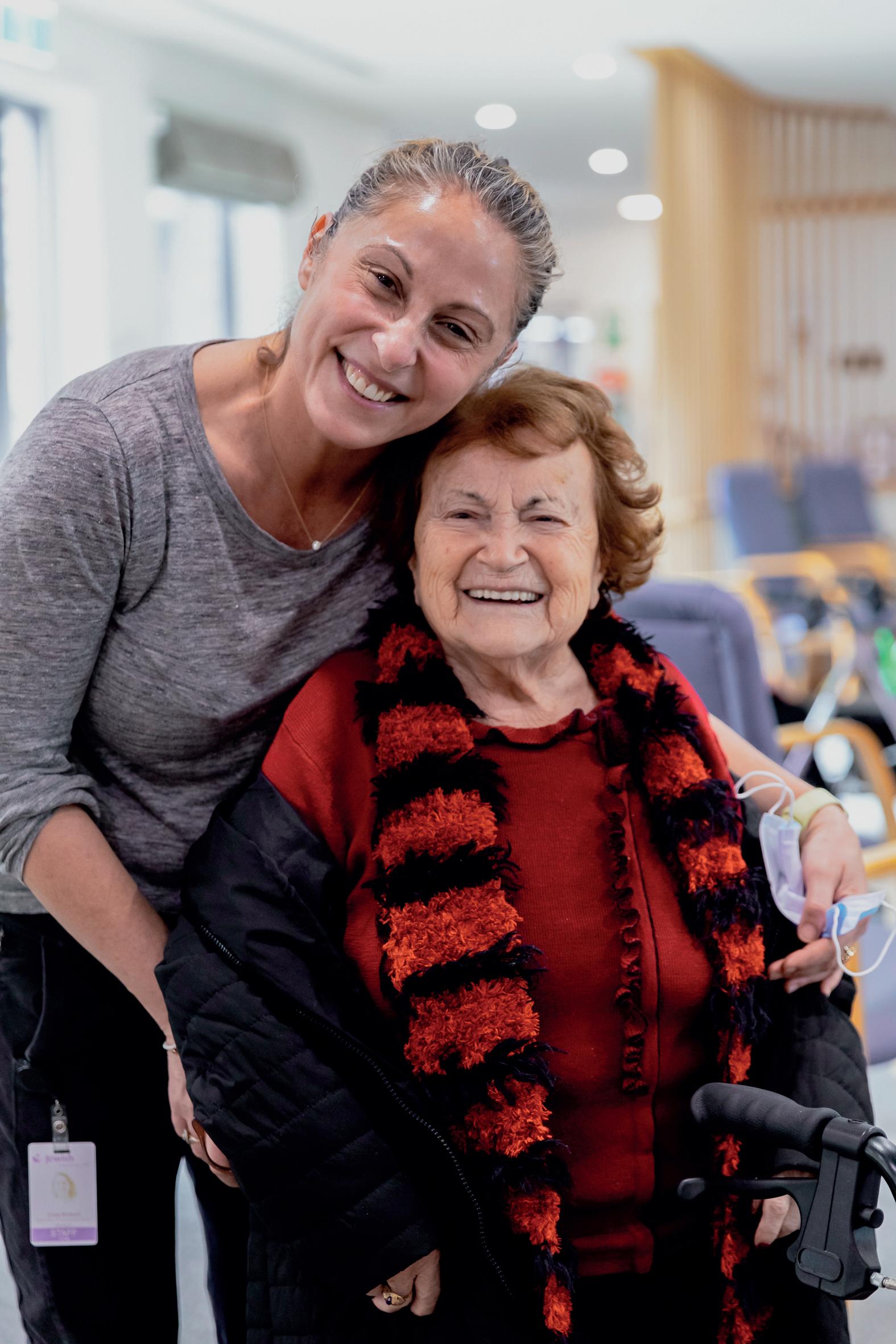
Everyone is welcome at Jewish Care and our admissions’ team work tirelessly to ensure a smooth and stress-free transition into our homes. Members of the team are always ready to take a call and assist with admissions in a planned, systematic fashion, although it is important to add “very quickly” in emergency
What assurances are given to family members that their loved ones are being looked after in the best possible way?
The first hour will involve a presentation by Jewish Care’s Chief Medical Officer, Dr Simon Grof, in conjunction with Associate Professor Alex Bahar-Fuchs, who is a researcher and clinician specialising in the field of cognitive ageing. They will discuss current practice and future horizons in dementia care in a community conversation titled “Let’s talk Dementia”.
Tours of Residential Home Windsor will follow.
To register, go to https://www.eventbrite. com.au/e/windsor-open-day-communityconversation-lets-talk-dementia-tickets802146591047?aff=oddtdtcreator
JEWISHCARE
home. Feel at Our residential aged care homes are located at Windsor, Caulfield & Carnegie. For further information, call Simone on (03) 8517 5504 or visit www.jewishcare.org.au Everyone is welcome Your choices, your way, knowing support is always there. We understand the importance of finding the right care for you and your loved ones. With our commitment to exceptional care, compassionate staff and state-of-the-art homes, we are dedicated to creating a warm and nurturing community environment. We promote an active and fulfilling lifestyle by offering a variety of engaging activities, social outings and events. •Chef cooked meals •Private dining rooms •Spacious courtyards •Private ensuite •Beauty salon •Onsite gym •Landscaped gardens •Respite care options SENIORS’ LIVING FEATURE
175-year anniversary celebrations at Gary Smorgon House, one of Jewish Care’s three residential homes (November 2023). From left: Adjunct Professor Alan Lilly, Chief Executive of Jewish Care, Tamara Zeltsman, Lifestyle co-ordinator for Gary Smorgon House and Rabbi Yoseph Nerenberg, Manager Jewish Life and rabbi for Gary Smorgon House
AROUND THE COMMUNITY
ANNE-MARIE ELIAS
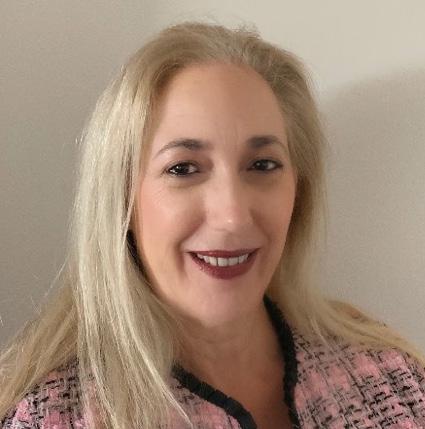
Walt Disney once said: "Growing old is mandatory, growing up is optional". How we view getting older and how we cope with ageing depends upon the individual.
Take a moment to consider what ageing means for you. Alicia Arbaje, a geriatric medicine physician at John Hopkins University, said that feeling old can hit at any age. It is perhaps the reason that some people can feel old in mid-life and others still consider themselves relatively spritely in traditional old age.
One of my GP colleagues recently said that one of the reasons nonagenarians have falls is because in their minds they are still teenagers. In recent years, it has also been more common to make statements like “60 is the new 40”.
As the ageing process is both physical and mental, we need to have a strategy to cope with changing life circumstances that are inevitable.
Rather than focusing on what was and what you were able to or used to do, it is more helpful to embrace life in a new way. For an older person that is retired or an empty nester, there is now time and
Understanding ageing

freedom to pursue interests that were not possible when working full-time or being a full-time parent to dependent children.
It can be frightening or stressful when considering your mortality. It is therefore important to share how you feel. Rather than sliding into melancholia or depression, talk to family, friends or a psychologist. In order not to bottle up these thoughts and feelings, it can be helpful to keep a journal.
Purim celebrations well underway
Ancient Persia was the backdrop for the re-enactment of the Purim story for The King David School’s Year 2 students recently.
In the lead up to the festival, they have been engaged in a series of experiential activities, learning about this joyous celebration that commemorates Jewish survival and determination.
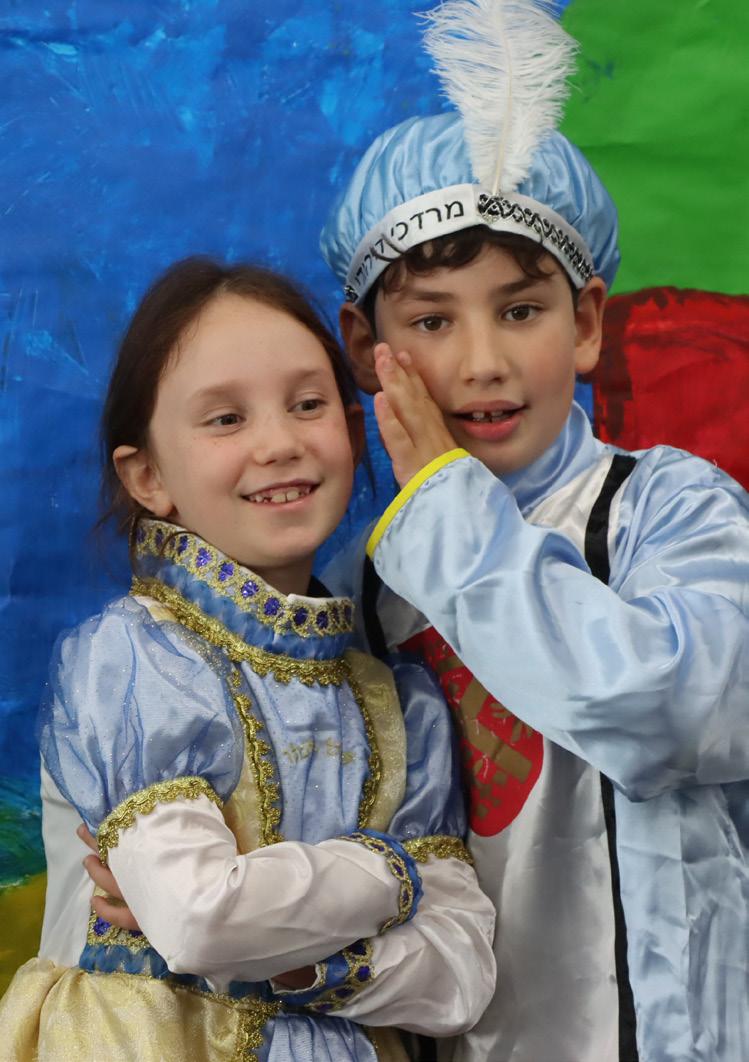
Purim focuses on “turning things upside down (v’nahafoch hu)”, on wonderful costumes and delicious food. During the Hebrew month of Adar, students from the Early Learning Centre to Senior School are encouraged to increase their merriment on themed days, which include Bows and Bandanas, Crazy Hair, Silly Socks and Sparkle and Shine. Then, on Purim itself, the day will be particularly joyful. Students will hear the Purim story, read the Megillat Esther, make ra’ashanim, dance, sing, play carnival games and more.
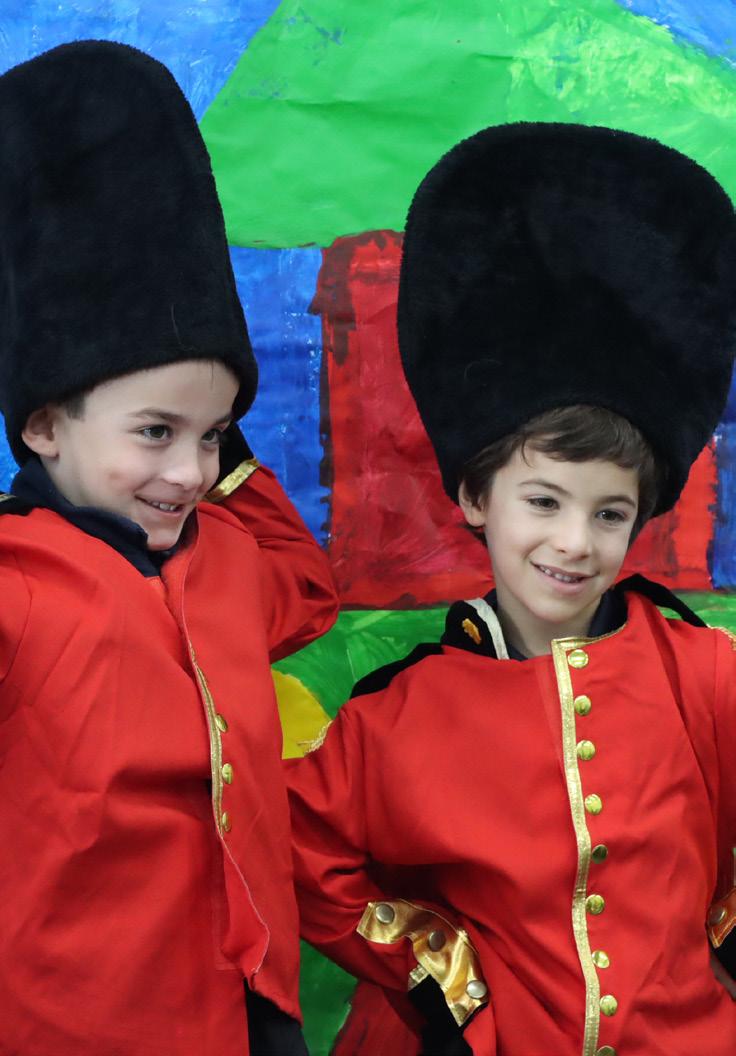
You can help to maintain cognitive function by learning new skills, while equally important is keeping our bodies moving through some form of regular exercise. So, this is all about maximising our mental and physical wellbeing for as long as we can.
Still, we also need to accept that we are ageing and that this may come with limitations, a change in health status and a loss of independence. As Western culture reveres youth, becoming an
older person can be a scary prospect and many older people report that they feel invisible.
Maintaining the best possible health may also include a change in attitude to the following:
1. More frequent appointments with medical practitioners and undertaking tests that were not required previously;
2. A change in diet, including the timing of meals;
3. Wearing more suitable footwear. For some women, it is a huge step to give up heels;
4. Using a walking aid if stability becomes an issue;
5. Recognising that you are no longer safe to drive;
6. Accepting help for tasks and household chores; and
7. Learning to do things at a slower pace and not overextend yourself.
The final words on ageing go to Scottish comedian, Billy Connolly: "I think age is terribly overrated. You're okay, as long as you don't grow up. By all means grow old, but don't mature. Remain childlike, retain wonder, the ability to be flabbergasted by something".
Anne-Marie Elias is a psychologist in clinical practice for 25 years.
Friday, Mar 16, 2024
Shabbat ends, Mar 17, 2024
pm
pm
Friday, Mar 23, 2024 7:51 pm
Shabbat ends, Mar 24, 2024 8:48 pm
Friday, Mar 1, 2024 7:42 pm
Shabbat ends, Mar 2, 2024 8:38 pm
Melbourne Jewish Report Disclaimer:
Except where expressly stated otherwise, content in The Melbourne Jewish Report is provided as general informations only. The articles in this paper have been contributed by a third party. The opinions, facts and any media content here are presented solely by the author, and The Jewish Report assumes no responsibility for them. It is not intended as advice and must not be relied upon as such. You should make your own inquiries and take independent advice tailored to your specific circumstances prior to making any decisions. We do not make any representation or warranty that any material in the papers will be reliable, accurate or complete, nor do we accept any responsibility arising in any way from errors or omissions. We will not be liable for loss resulting from any action or decision by you in reliance on the material in the papers. By reading the papers, you acknowledge that we are not responsible for, and accept no liability in relation to, any reader’s use of, access to or conduct in connection with the papers in any circumstance. Photographs submitted by individuals or organisations are assumed to be their property and are therefore not otherwise credited. All articles in this paper have received the expressed consent of the author to publish in this paper.
The Jewish Report; ISSN 2204-4639
Publisher: The Jewish Report Pty Ltd (ACN 167302981)
Distributor: TJR Distribution Pty Ltd ACN 165158029
Comments or suggestions to: editor@thejewishreport.com.au
Article submissions to: www.thejewishreport.com.au/article-submission-guidelines
Advertising: editor@thejewishreport.com.au
Website: www.thejewishreport.com.au
Printer: Spotpress Pty Ltd
12 the melbourne jewish report | Mar 2024
CANDLE LIGHTING TIMES
8:00
8:58
THE KING DAVID SCHOOL
From left, Year 2 students Daniel Luethi and Asher Lipson
Year 2 students Carmelle Naim-Feil and Max Joseph
RABBINIC THOUGHT
RABBI DANIEL RABIN
Rabbi Daniel Rabin has just returned from his first visit to Israel since the October 7 terrorist attack.
Leaving Melbourne, I was enveloped in a cloak of mixed emotions, a stark contrast to the usual buzz of excitement that accompanies my trips to Israel. This time, a sense of anxious anticipation hung heavily in the air, a prelude to a journey that promised to be vastly different from any I had embarked on before. The mission was organised by Caulfield Shule and The Joint Australia (JDC).
The peculiar silence that greeted me at Ben Gurion Airport was the first sign that this was an Israel transformed. Gone were the familiar hustle and energetic welcome. The images of hostages adorned the walls, their silent pleas resonating in the empty spaces.
Amidst these sombre reminders were signs of the phrase “beyachad nenatzayach” (together, we will be victorious) posted everywhere, symbolising the collective strength and determination that underpinned our entire journey.
Our accommodation had been transformed into an “evacuee hotel”. The dining room, usually a place of transient encounters, was now a space of refuge for families uprooted from their homes. Seeing parents filling their children’s lunch boxes from the buffet
The resilience of Israel

highlighted the upheaval to their regular lives.
Shiran, a young mother evacuated from Yachini brought the harrowing reality of the situation into sharp focus. Her description of the events of October 7 and her uncertainty about returning home revealed the deep scars left by the ever-present threat of terror.
Our visit to Eran’s Angels in Tel Aviv, where a parking lot had been converted into a donation centre, further highlighted the incredible sense of community and generosity. There, I
had the opportunity to contribute to the relief efforts, packing supplies for an IDF unit. The experience was a testament to the solidarity and care that the Israeli community extends to its members in times of need.
Meeting Moshe, who provides meals to soldiers and the needy, was another touching moment. His story of his village evacuation and the actions of IDF soldiers during a rocket siren, when they lay on top of the children to create a protective “blanket”, exemplified the spirit that defines the Jewish people.
In Ichilov Hospital, I met Elad, a soldier recovering from an explosive device injury. His unwavering determination to rejoin his unit spoke volumes about the deep bonds and commitment within the IDF.
The stories from Rabbi Bentzi and Rebbetzin Noa at the Machane Shura, the IDF rabbinic base, were particularly harrowing. They spoke of the aftermath of October 7 and their job as the Chevra Kadisha on that day. They showed total respect, love and dignity to all those killed and to their respective families.
Our journey also included visits to sites of devastation and determination, such as Kibbutz Nir Oz and Hostage Square, as well as the MDA Blood Centre and Natal Trauma Centre. The recently built underground ICU wards at Shaarei Tzedek and Hadassah Hospitals stood as symbols of a nation's readiness to protect and heal its people.
A stirring moment that captured the enduring spirit of Israel occurred as I returned from the shuk before Shabbat. A spontaneous gathering of people singing "Am Yisrael Chai" was a powerful reminder of the indomitable spirit of the Jewish people.
This mission was not merely another visit to Israel; it was an extraordinary journey into the heart of a nation defined by trauma, resilience and community.
Killing our perception of God this Purim
DR BENJI LEVY
The German philosopher Friedrich Nietzsche famously declared that God is dead and we have killed Him. Made redundant by science and humanism, Nietzsche believed that God was no longer necessary to provide people with meaning. Nietzsche’s perception stands in direct contradiction to our profound sense of faith, but adapting the notion of “killing God” can in fact reveal a new depth to the Purim story.
A famous element that sets the Book of Esther apart from other biblical texts is the glaring omission of God’s name. The Megilla is scrupulous in naming every character that played an important role, so why not mention God? Perhaps the author of the Megilla deliberately left God out of the narrative to allow us to kill a perception of God and make room for a new one.
When God offered the Torah to the Jewish people, they famously declared (Exodus 24:7) na’aseh v’nishma (we will do and we will listen). The Talmud (Yevamot 46b; Keritot 9a) explains that through this experience the Jewish people converted en masse and emerged like newborn children (Yevamot 62a). This label that the Talmud gives to those that accepted the Torah as children is supported by their seemingly blind trust in their parents without knowing all the details. Centuries later, however, we are taught that the
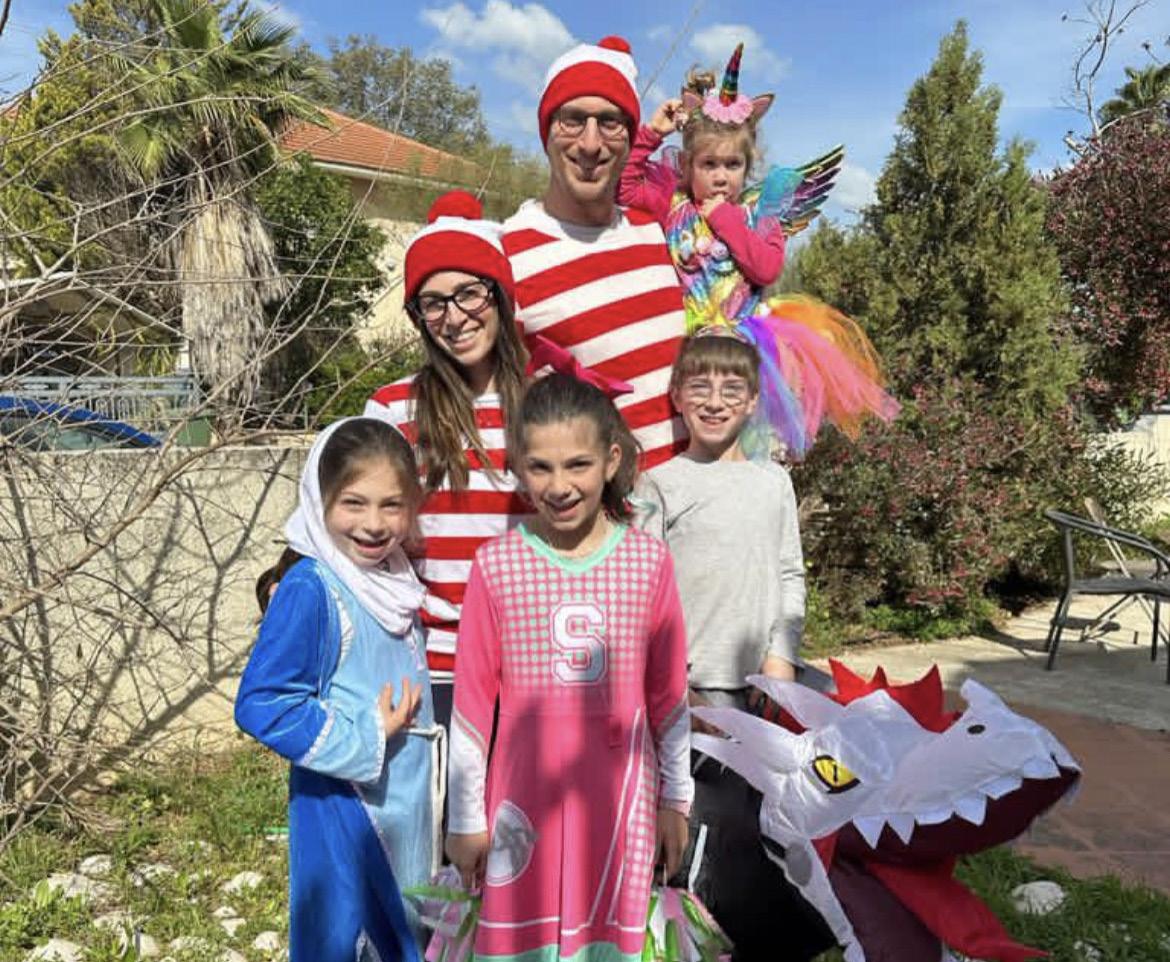
Jews re-received the Torah at Purim time from a new perspective (Shabbat 88a).
In what way?
The Rosh Hashana prayers famously centres around the coronation of The King. This title, “The King”, is used in reference to God in many other places, leading the sages to claim that when the term “The King” is mentioned in the Megilla, it is also referring to God. Perhaps it was through “killing” this infantile view
of God and burying His explicit name through the use of HaMelech that allowed us to receive the Torah anew.
Children can have an immature outlook on their parents and teachers, and often view God as a parental figure in a simplistic way. As we grow older, our understanding of the world and how it works becomes more sophisticated. At the same time, however, we often retain a less complex view of God, as
we don’t always challenge ourselves to examine this area of our lives. While transitions between life stages can be a slow process, childhood must end for full adulthood to be born, and so to truly grow we must also fundamentally alter our preconceived notions of God. As we develop, we must delve into more facets of the Creator with greater depth. What one learns of God as a five-yearold is but one dimension and if God remains one-dimensional, so does one’s approach.
An element of Purim is about moving beyond the God of our collective childhood, allowing us to realise that God is the King, who is distant and distinct, but at the same time approachable and present. The latter needs to be uncovered, in the same way that any relationship requires work. This realisation is what enabled the Jewish people to “re-receive” the Torah as the Talmud outlines and compels us to always deepen our relationship, seeking out God beyond His basic name each year through Purim.
As we mature over time, we need to challenge our earlier perceptions and re-examine the world and our notions of God in more sophisticated and nuanced ways. Killing God is not the answer, but killing our perceptions of Him is part of the process we need to take in improving our relationships and gaining a more profound perspective.
13 the melbourne jewish report | Mar 2024
RABBI
Rabbi Benji and his wife Renana with their children celebrating Purim
Rabbi Daniel Rabin is pictured immediately behind the Union Jack on the Australian flag. He was part of a mission to Israel organised by Caulfield Shule and The Joint Australia (JDC).
RABBINIC THOUGHT
RABBI GABI KALTMANN
I am still on a high from last month, when our community welcomed our first ever Sfardi Sefer Torah. It was wonderful to see so many people dance with the Torah into our community centre, knowing that this Torah will be the anchor to so many of our upcoming simchas. It is also heartening to be able to call a Sefer Torah our very own. How wonderful and how exciting!
The Torah was donated in honour of the late Moshe Adut, an exceptional man who I knew as a child and always respected immensely. Moshe was Sephardic, growing up in Turkey, before making his way to Israel. I knew Moshe because his wife, Gaby, is a close family friend and their son, Itamar, became my dear friend when they came to live in Australia for a few years. Moshe was one of those people that said it how it was. Straight shooting. Fiercely clever. Very good with his hands. He loved Israel with all his might and passed away at an untimely age due to COVID-19.
The Torah, which is the central and most sacred text in Judaism, is the same for both Sephardi and Ashkenazi Jews. There is no difference in the content of the Torah itself. The Torah consists
We celebrate a new Torah
of the same five books of Moses: Genesis, Exodus, Leviticus, Numbers and Deuteronomy.
The differences between Sephardi and Ashkenazi traditions are more related to cultural, historical and liturgical practices.
A Sephardi Torah is read facing up. That is opposite to an Ashkenazi Torah, which is read looking down. No matter where we are from in the world, whether we are Ashkenazic or Sephardic, we are united behind our love of Torah and our rituals, which, despite thousands of years since the exile, remain the same.
I hope that in the merit of this Torah, donated in honour of a respected friend, we – as a community – emulate many of his characteristics: A commitment to Torah and Mitzvot. A commitment to Judaism and tradition. A strong sense of justice and helping those that are in need or feeling down. A fierce love of all Jews, the land of Israel and the tradition that we have been lucky enough to be part of. Most of all, the Torah represents the unity that we are witnessing as Jewish people across Israel and the Diaspora. It doesn't matter what your background is or how you read from the Torah, we remain one people and as united as ever.
Am Yisrael Chai!
Why get married?
RABBI YAAKOV GLASMAN AM
As the congregational rabbi of a large, life-cycle oriented shule, I am privileged to officiate many weddings. I am sometimes asked – why marry? We live in the 21st century when both the government and society recognise de facto relationships as legally equivalent to marriage. So why bother? Why invest the effort and expense in tying the knot under the chuppah? This is a fair question and one that can be best answered by exploring the concept of marriage from a Jewish perspective, both religious and contemporary.
In Judaism, marriage is imbued with profound spiritual significance. It embodies the union of two souls to become one. Rooted in both biblical teachings and kabbalistic wisdom, marriage is regarded as a sacred covenant designed to foster spiritual growth, create harmony and fulfill a divine purpose.
Central to Jewish tradition is the belief that marriage is not merely a social contract, but a spiritual institution, ordained by G-d. The Torah emphasises the importance of marriage as a cornerstone of human existence. In Genesis 2:24, it states: "Therefore a man shall leave his father and his mother and hold fast to his wife, and they shall become one flesh." This verse underscores the intimate bond between husband and wife, symbolising a profound spiritual connection that transcends individual identities.
Kabbalah, the mystical branch of
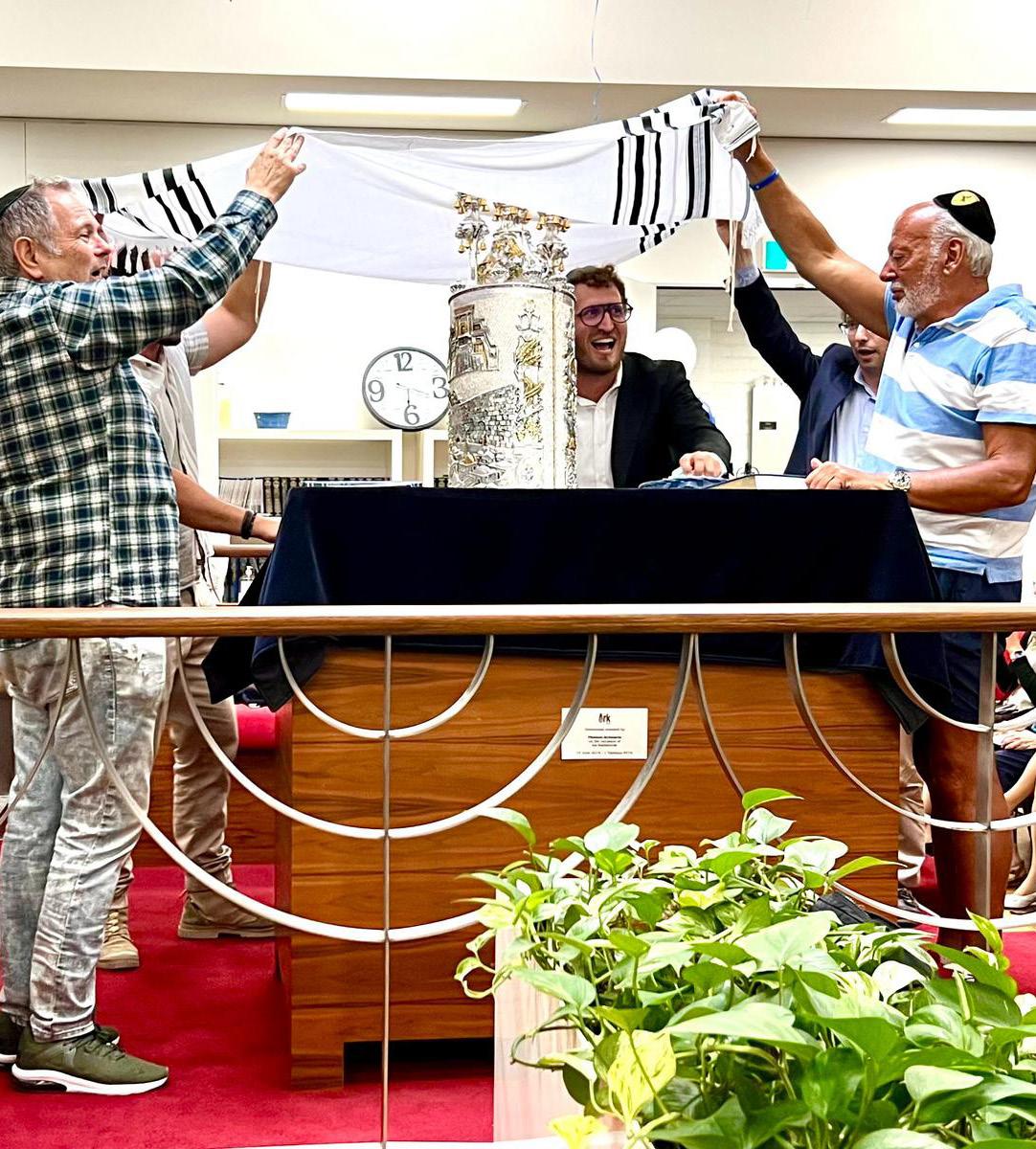
Jewish thought, offers deeper insights into the spiritual dimensions of marriage. According to kabbalistic teachings, each soul is inherently incomplete and seeks its counterpart to achieve wholeness and spiritual elevation. The union of husband and wife is seen as a reunion of two halves of a single soul, destined to unite and fulfill their divine purpose together.
In a contemporary sense, marriage remains significant as a sacred bond that unites individuals in love, commitment and shared purpose. It serves as a foundation for building families, nurturing relationships and passing down traditions to future generations. Marriage embodies the values of mutual respect, partnership and spiritual growth, offering couples a framework for navigating life's challenges with resilience and mutual support. Within a modern context, marriage in Judaism continues to be celebrated as a source of joy, fulfillment and connection to community, while also adapting to evolving societal norms and individual aspirations.
Marriage, therefore, is not simply the reinforcement of an existing de facto partnership. It is the introduction of a third partner, G-d, into the relationship. And given the profound spiritual significance of this experience, all the time and effort that goes into planning and preparing for this special day is absolutely worth it.
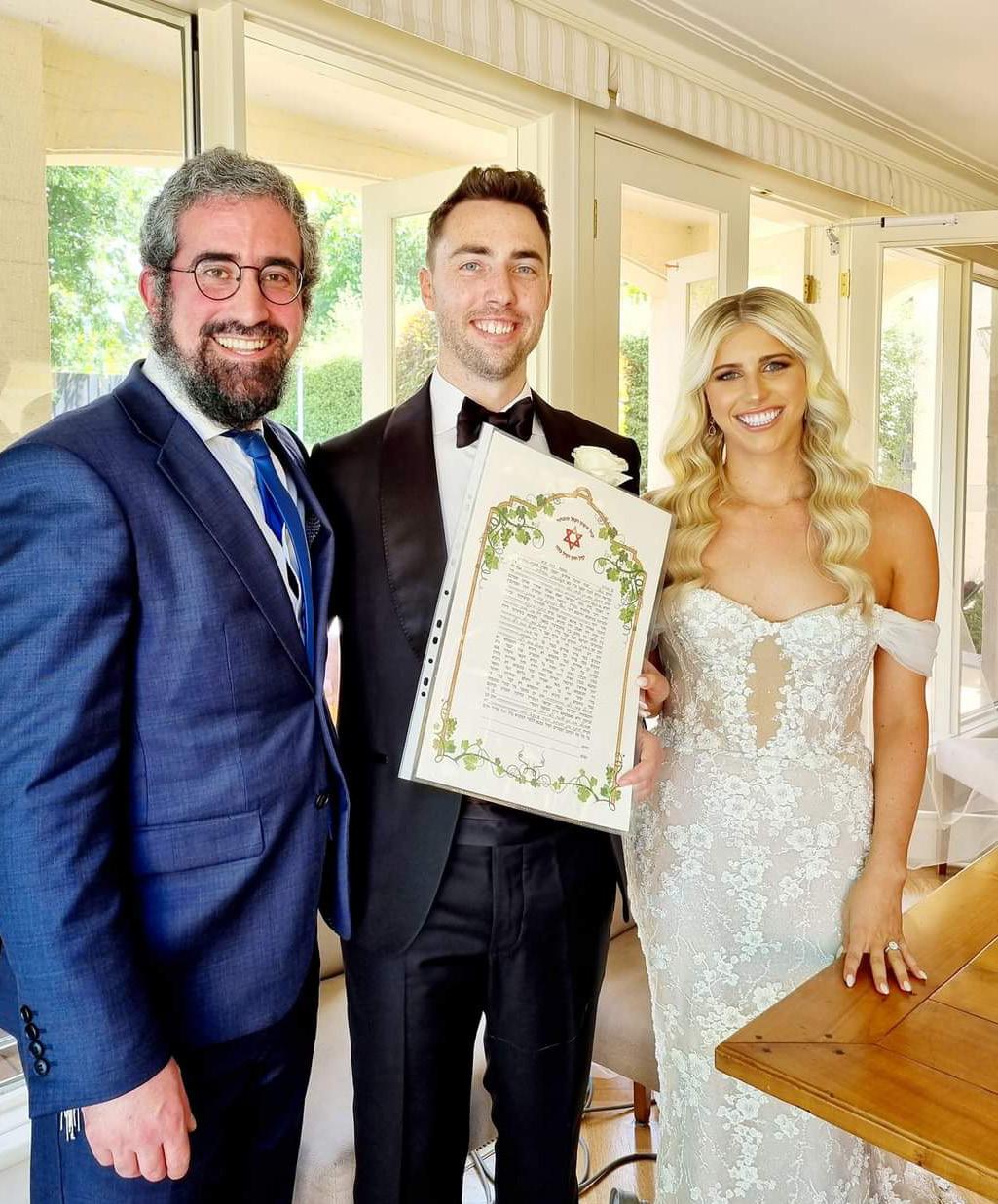
14 the melbourne jewish report | Mar 2024
Rabbi Gabi Kaltmann (centre) celebrating the arrival of the Ark Centre’s first first Sfardi Sefer Torah
From left: Rabbi Yaakov Glasman, Sean Kozer and Erin Blashki on Erin and Sean's wedding day
CONSIDERED OPINION
DR YVETTE ALT MILLER COURTESY: AISH.COM
There is a wealth of meaning behind some common Jewish words. Here are the origins and deeper meanings behind nine of them.
Kvell
Kvell is to swell up with pride, usually for one’s kids. This modern usage comes from the Yiddish word kveln, meaning to be delighted. Kveln entered Yiddish from German centuries ago: the Middle High German word quellen meant to gush up, to well, or to swell.
Amen
Amen comes from the Hebrew word emunah, meaning belief, faith, credible, authentic and true. The Talmud (Shavuot 36a) relates the two words; when we hear someone recite a blessing, saying Amen indicates that we too accept these words as true.
Amen also has a deeper meaning: it is an acronym for the Hebrew phrase El Melech Ne’eman, which means “God, Faithful King”. Thus, Amen also functions as a declaration in its own right, expressing our belief in the Divine.
Mensch
These days, a mensch is a person of strength and honour. It comes from the Yiddish (and, before that, from the German) mensch, which literally means a man or a person. (This in turn came from Old High German mennisco, meaning human, which came from Proto-German manniska, describing someone as human.)
Yiddish went beyond the literal meaning of a person, however. Reflecting Jewish values, a mensch is a person in full, someone who fulfills his or her obligations and does what is right.
Kosher
Kosher literally means fit, proper and appropriate. The term “Kosher” can be applied to a range of items that are governed by Jewish law. Torah scrolls and mezuzahs are “kosher” when they are correctly written and maintained. Legal contracts and documents are “kosher” when they are appropriately designed and carried out, in accordance with Jewish law. Kosher food is that which the Torah permits for consumption by Jewish people.
The rules of kosher food are found in the Bible in the books of Leviticus and Deuteronomy, and are expanded on in the Talmud. By observing these rules, Jews are able to bring holiness into all areas of their lives each time they cook and eat.
Mutterings
Deeper meaning of common Jewish words

Nachas
Nachas is the pride and joy we get from our children. A common Jewish sentiment is “may you have nachas from your children”.
Nachas comes from the Hebrew word nachat, meaning satisfaction and pleasure. (That in turn derives from the Hebrew lanuach, meaning to rest.) To derive nachas is also expressed in the Yiddish phrase to shep nachas. Shep comes from the Yiddish shepn, meaning scoop.
Messiah
Messiah comes from the Hebrew word moshiach, which literally means anointed with oil. In Biblical times, the title moshiach was given to people who had reached positions of leadership and greatness.
The Kohen Gadol, who performed the Yom Kippur service in the Temple, was called the Kohen ha-Moshiach, or the anointed high priest, because he was literally anointed with oil when he took up his position.
The title Moshiach is reserved for a future Jewish leader who will become king and begin a period of perfect peace. This Moshiach, or Messiah, will be a descendent of King David, and will restore the Davidic dynasty. Jewish tradition notes that he will be wiser even than King Solomon.

It is said that in each generation, a potential Moshiach, or Messiah, is living. When the Jewish community finally reaches its potential and lives according to the timeless laws of the Torah, that leader will arise, ushering in an era of perfect peace.
Jew
The name “Jew” comes from the name of Jacob and Leah’s fourth son, Judah (Yehudahin Hebrew). The Torah notes that after Leah gave birth to Judah she “declared ‘this time let me gratefully praise God’, therefore she called his name Judah” (Genesis 29:35). According to the great Italian Jewish commentator Rabbi Ovadia Sforno, Judah’s name reflects intense holiness: it not only contains the letters of God’s name, it also contains the root of hodu, the Hebrew word for thanksgiving and praise.
Before he died, Jacob blessed Judah with kingship: “The scepter shall not depart from Judah nor a scholar from among his descendants” (Genesis 49:10). Jacob’s prophecy was fulfilled: King David, from the tribe of Judah, eventually reigned over a united Israel. Following the death of King Solomon, the ancient kingdom of Israel split into two: the northern Kingdom of Israel, home to 10 of the Jewish tribes, and the southern Kingdom of Judah, home to the tribes of Judah and Benjamin. The ancient Assyrian empire wiped out the northern Kingdom of Israel in the 5th Century BCE and exiled the ten tribes; only the tribes of Judah and Benjamin remained to carry on Jewish tradition. Over the years, “Judah” came to refer to any Jew, regardless of tribe or status. The first person to be called a “Jew” in the Bible is Mordechai, in the Book of Esther, which describes the events of the holiday of Purim. The wording is curious: Mordechai seems to be called both a descendent of the tribe of Judah and a descendent of the tribe of Benjamin: “There was a man, a Jew (Yehudi) in Shushan the capital whose name was Mordechai….a Benjaminite” (Esther 2:5). The Talmud discusses this curious wording, concluding that Mordechai was indeed descended from the tribe of Benjamin. “Yet he was called a Yehudi (Judah-ite) because he rejected idolatry, and anyone who rejects idolatry is called a Yehudi” (Megillah 12b).
Hebrew
The word for Hebrew in Hebrew is Ivri. (In Hebrew, “b” and “v” sounds can
sometimes be expressed with similar letters; in the process of translation to English, the “v” became a “b”.) Ivri comes from the word “ever”, meaning the other side.
The first person in the Torah to be called an Ivri, a Hebrew, is Abraham, after he and his wife Sarah entered the land of Israel. On a literal level, Abraham and Sarah indeed were “ivri”, or people who came from the other side: in their case, they came from the north, across the Euphrates River.
On a deeper level, Abraham and Sarah were from “the other side” as well. They championed a belief in one God while the rest of the world indulged in idol-worship, and they lived lives of upright moral behaviour amidst a sea of depravity.
The second person in the Torah to be called an Ivri is Joseph, Abraham and Sarah’s great grandson, who found himself alone and isolated in Egypt, yet still lived by the moral code he’d inherited from his illustrious ancestors in Israel. After Joseph resists the advances of his master’s wife, the Torah refers to him as an Ivri.
After 3,000 years, we, the descendants of Abraham and Sarah, remain Hebrews, people who continue to cling to our belief in God and the moral code of the Torah, even when that means standing apart.
Mitzvah
In modern parlance, mitzvah often is used to mean a good deed. Many of these mitzvot (the plural of mitzvah) instruct us to live good, moral lives, for instance by giving charity, visiting the sick and extending hospitality. Mitzvot do guide us to lead good lives.
Yet the meaning of mitzvah goes much deeper. It means commandments given to us by God. The word mitzvah is used 300 times in the Five Books of Moses. Jews are obligated in 613 mitzvot (the plural of mitzvah); Gentiles are obligated to perform Seven.
In Jewish thought, actions profoundly affect our very being: what we do shapes who we are. By performing mitzvot we are aligning ourselves with the goals of the Divine. The word mitzvah is also related to the Aramaic word for join, tzevach. When we do mitzvot we are attaching ourselves to a greater good, elevating ourselves in the process.
15 the melbourne jewish report | Mar 2024
AROUND THE COMMUNITY
A new Australian Holocaust museum doubles down on its mission after the tragedy of October 7.
Because many of the Queensland Holocaust Museum’s visitors have never met a Jew, its strategy of outreach takes on added importance in its quest to educate on racial tolerance.
Artifacts from the Kraus family, who survived the Holocaust, on display at the Queensland Holocaust Museum (photo courtesy Queensland Holocaust Museum and Education Centre)
A self-guided journey awaits visitors at the Queensland Holocaust Museum (photo courtesy Queensland Holocaust Museum and Education Centre)
With just a handful of small synagogues in Brisbane and a Chabad House in the state’s remote north, the Jewish community in Queensland – which numbers just 5,000 – has historically been overshadowed by larger and more established Jewish communities in Melbourne, Sydney and Perth.
But last August, Israel’s ambassador to Australia, Amir Maimon, made the trip north from Canberra to visit Queensland’s first-ever Jewish museum — a Holocaust museum in Brisbane that had opened its doors in late June.
With Jews accounting for just 0.1 per cent of the state’s population, most Queenslanders will never meet a Jew and are likely to have a limited understanding of Jewish culture and tradition. For that reason, the Queensland Holocaust Museum aims to have an outsize impact in educating one of Australia’s fastestgrowing populations.
“The need for this museum and the education it provides has never been more relevant than in the aftermath of the October 7 attacks on Israel,” said museum board member Danny Berkovic.
“Educating the Australian public about where the extremes of social intolerance can lead has real relevance, given the backdrop of the conflict in Israel.”
“Here is a state in Australia, where a lot of the population may not have had a chance to meet Jewish people and
Queensland Holocaust Museum

there is a lot of misinformation about the Holocaust,” said Berkovic. “We hope the museum will help to educate Queenslanders about one of the most tragic chapters in human history and also more generally about racial tolerance.”
“Over 80 per cent of the Jewish population [in Australia] live in Sydney and Melbourne. If we focus all our Holocaust education in these cities, we are missing a chance to educate large numbers of Australians who may not be thinking deeply about racial intolerance,” Berkovic said.
Applying lessons of the Holocaust
Jason Steinberg is the president of Queensland’s Jewish Board of Deputies. In part, it is thanks to his dogged efforts over the past decade that the Queensland Holocaust Museum became a reality. A born and bred Queenslander, Steinberg works at a global engineering and consulting firm, but has spent years volunteering as a
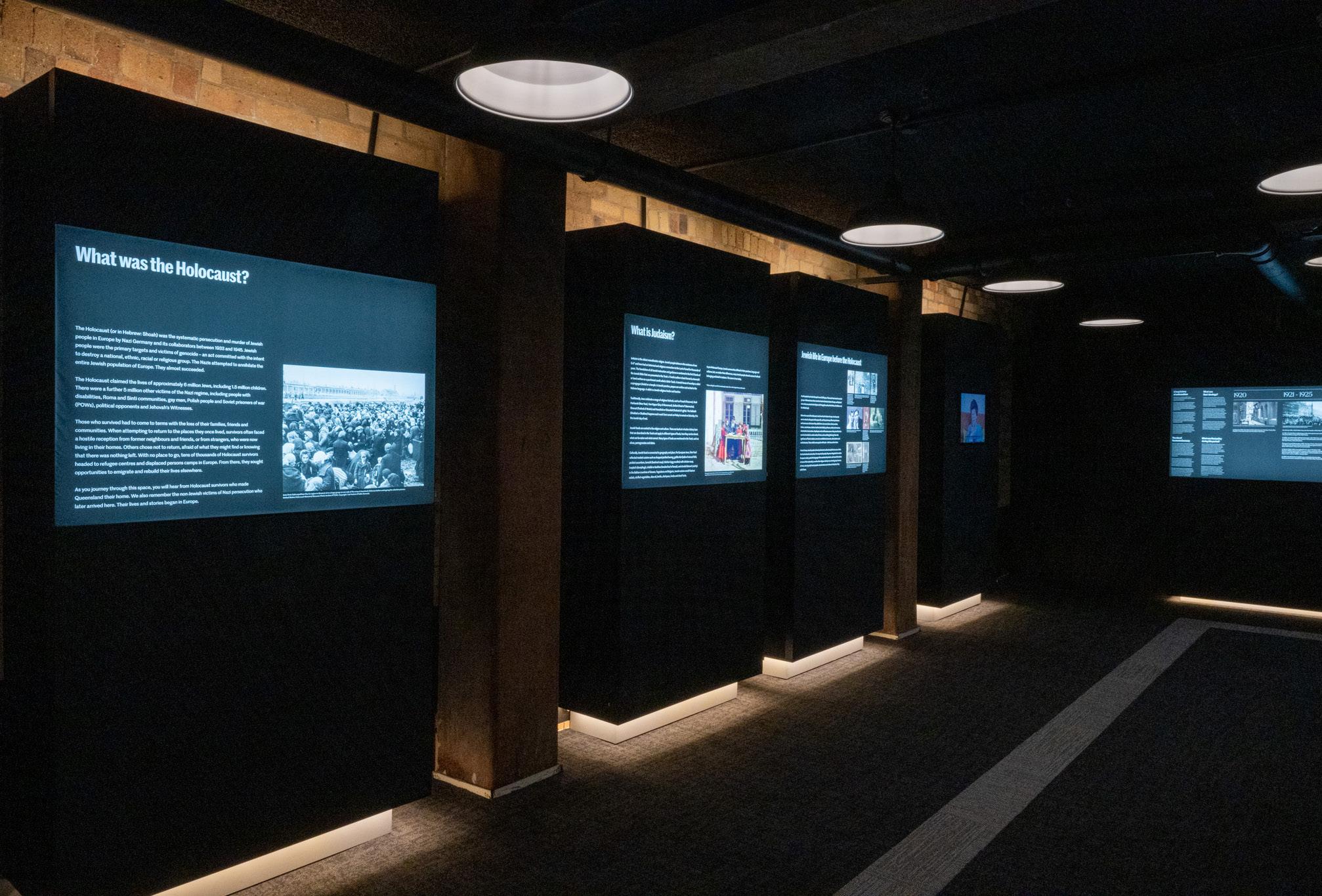
leader in his small community. “If people understand the Holocaust and how it impacted Jewish people and other communities, they can apply it in their daily lives to be respectful of others and support multiculturalism,” said Steinberg.
This vision accelerated in 2019, when former Treasurer Josh Frydenberg announced that he wanted to establish Holocaust museums in every Australian state and territory. In addition to $3.5 million tipped in by the federal government, the Queensland Holocaust Museum was funded through a mix of local grants, including more than $4 million from the Queensland state government and the Brisbane city council.
“I think I’m in a lucky position to be able to have advocated for our community for the first-ever Holocaust museum,” said Steinberg. “We have also been very lucky that space for our physical museum [has been provided] by the Catholic Archdiocese in Brisbane,” he said, referring to the prime location the museum sits on.
While originally it was estimated that Queensland was home to only a few dozen Holocaust survivors, the small team at the museum has now identified more than 200 and is actively highlighting the stories of survival and resilience in Queensland’s community. The museum will also serve as an educational institution and will raise awareness about human rights, as well as foster dialogue on genocide prevention.
“The community of survivors, they are so honoured that their family’s heritage is now immortalised in this museum and it is also very emotional for the descendants,” said Steinberg.
Three-pronged approach
The museum is comprised of three components – a physical museum in Brisbane, a traveling museum that will visit regional areas across the state and
an online museum highlighting the stories of Queensland’s Holocaust survivors.
‘Discover pods’ at the Queensland Holocaust Museum (photo courtesy Queensland Holocaust Museum and Education Centre)
The impact of the museum is likely to be felt far and wide. Rabbi Ari Rubin heads Chabad House in Cairns. In 2023, after a worker at a well-known traffic control company drove around Cairns displaying an electric traffic management sign saying, “Jews did 9/11”, Rabbi Rubin wrote an opinion piece for the local paper decrying antisemitism. With an estimated 500 Jews among the city’s 150,000 residents, the perpetrator of such a hateful message had likely never even met a Jew. Rabbi Rubin is excited for the traveling museum to be making its way his way to help educate the locals.
“I really want the non-Jewish kids in the schools to get a taste of education about the Holocaust,” he said.
He is aware that his own children and others in his community have experienced harassment for being Jewish and he is hopeful that the education offered by the traveling museum will make a difference. “I know children that suffer for being bullied for being Jewish and hide their Judaism, so I hope this will improve things for them,” he said.
Danny Berkovic said that with the Queensland population spread across major cities and a vast outback, the online museum will help deliver Holocaust education to those unable to pay a visit to the physical museum in Brisbane or to view the travelling museum.
“I don’t think anyone would want to ignore a population that’s going to be [more than] 10 million people by 2060,” he said.
NOMI KALMANN
Artifacts from the Kraus family, who survived the Holocaust, on display at the Queensland Holocaust Museum (photo courtesy Queensland Holocaust Museum and Education Centre)
A self-guided journey awaits visitors at the Queensland Holocaust Museum (photo courtesy Queensland Holocaust Museum and Education Centre)
16
the melbourne jewish report | Mar 2024
CONSIDERED OPINION
BRENDA GOLDSTEIN COURTESY: AISH.COM
Working for Oskar Schindler, Joseph Bau forged identities and saved hundreds of Jews. The famous artist also worked for the Mossad.
Remember the scene in Schindler’s List when the couple secretly marries in the concentration camp? That really happened to Joseph Bau and his wife, Rebecca. An artist and draftsman, Bau was a master in forging documents and worked with Oskar Schindler to save hundreds of Jews from certain death. After the war, Bau became a celebrated artist in Poland and Israel.
Born in Krakow, Poland, in 1920, Bau studied at that city’s University of Plastic Arts. In his first year, his calligraphy teacher announced an optional lesson in German Gothic letters. Despite Bau’s distaste for the German language, particularly during the war, he attended this lesson – and it ended up saving his life.
When Bau had to move with his family into the Krakow Ghetto in 1940, the German police hired him to write Gothic letters for signs and maps. At the same time, he forged documents for the Jewish underground. “The funny thing is that the Nazis were looking everywhere for spies,” recalled his daughter Clila Bau-Cohen, “and they didn’t know that the biggest spy was sitting right in their office!”
From there, the family went to the Plaszow concentration camp, where the famous secret wedding took place by the bunk of Bau’s mother, Cyla Bau, in 1944. Bau had traded his precious bread rations for a small silver spoon, which he then had fashioned into two wedding rings.
Bau called the wedding scene depicted in Spielberg’s film, where friends of the bride and groom fashion a wedding canopy out of a bedsheet held up by two brooms, “complete nonsense. Whoever heard of sheets in a camp? We slept on rags!”
As manicurist to Plaszow’s monstrous commander, Amon Goeth, Rebecca found out about Schindler’s list and arranged to have her husband’s name added to it, instead of her own. Bau only found out about this selfless act of love 50 years later.
The couple then had to separate for several months, when Rebecca was sent to Auschwitz and Bau to Gross-Rosen and then Brünnlitz, the “camp” run by Oskar Schindler, in Czechoslovakia. Schindler ran an armaments factory that protected the Jews working there.
After the war, Joseph and Rebecca Bau miraculously found each other in Czechoslovakia and renewed their vows in a formal ceremony in Krakow in 1946. Sadly, both had lost almost everyone in their respective families in the Holocaust.
Bau renewed his design studies and enjoyed success as a caricaturist and cartoonist for four newspapers in Poland. In 1950, he and Rebecca moved to the newly independent State of Israel. Bau became Israel’s first animator, known
Schindler’s right-hand man became Israel’s Walt Disney

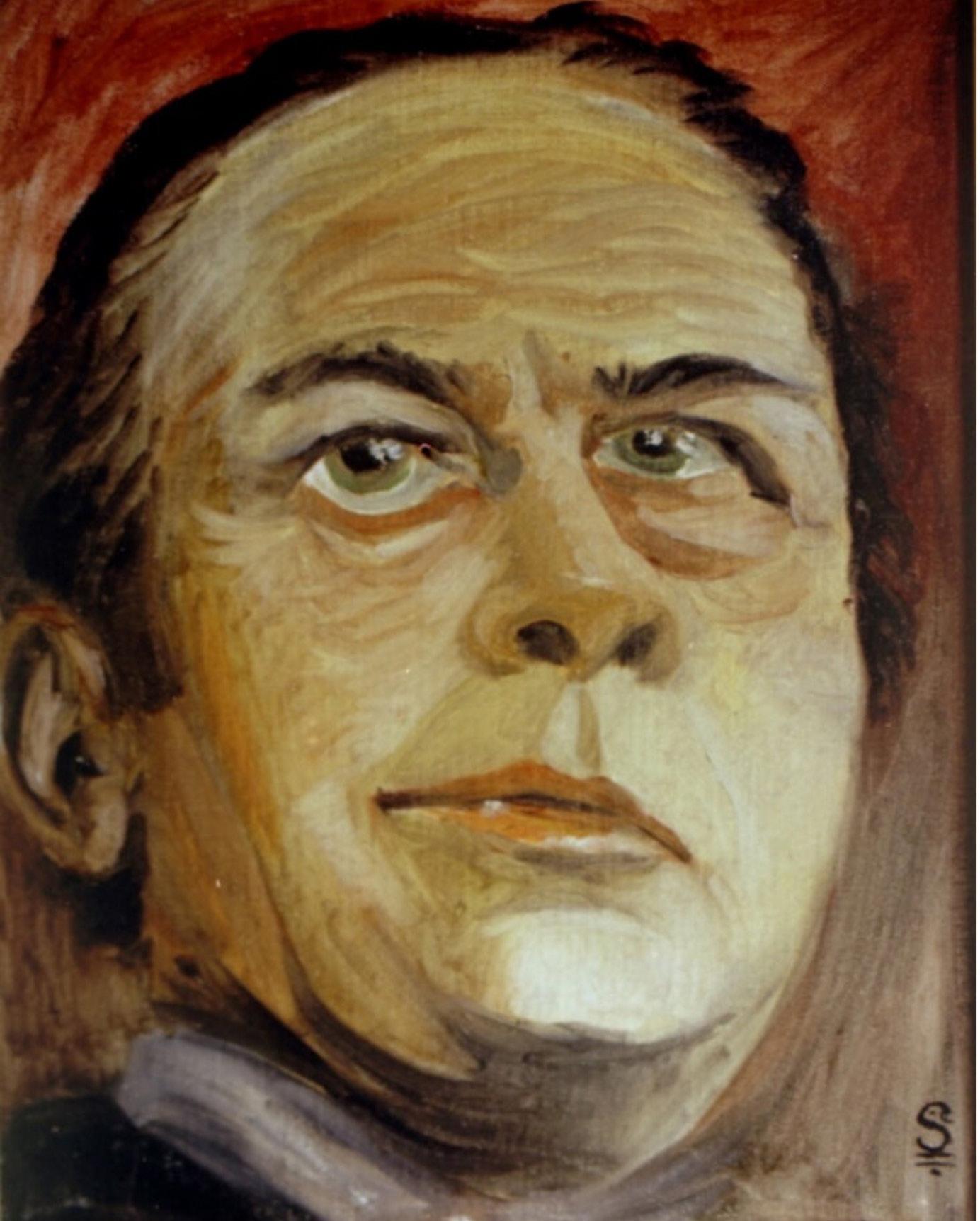
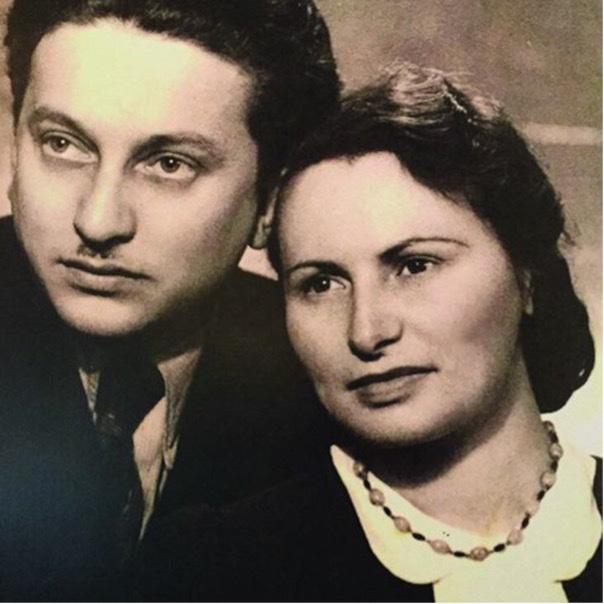
in the media as the Israeli Walt Disney. He produced animated shorts for movie theatres and television, as well as public service announcements, and created the opening and closing titles and credits to nearly every Israeli film made from the 1950s to the 1970s.
Unknown to his family until after his death in 2002, Bau also worked as a graphic artist for the Mossad. He forged papers for Eli Cohen, who famously spied on Syria for Israel, as well as for the
team that caught Adolph Eichmann in Argentina.
Over 25 years ago, his daughters turned their father’s Tel Aviv art studio into the Joseph Bau House Museum, where visitors can learn about the life and work of this amazing man. Even though the museum has received awards for being a major tourist attraction, the Culture Ministry wants to tear it down. Because of its small size – 53 square meters, as opposed to the required 200 square
meters – the Ministry will not consider the Joseph Bau House a museum and therefore will not support it financially. The museum must rely on personal donations to survive.
One can also see Bau’s artwork in museums and galleries throughout the world, and also international venues such as the Knesset, the Spanish Parliament and the United Nations headquarters in New York.
Bau authored 10 books, including his memoirs of World War II: Dear God, Have You Ever Gone Hungry? The Hebrew language version came out in 1982; the English one in 1998. The book has been translated into many other languages, as well. In it, he drew a diagram of the Plaszow concentration camp, which Steven Spielberg used to recreate the camp in Schindler’s List. Unlike most books on the Holocaust, Bau threw in some humour, which undoubtedly helped get him through those hellacious five years. “He never lost his humor. Even in the most difficult moments, he would find something funny to say,” said Clila Bau-Cohen.
He wrote a book of poetry during the Holocaust, titled The World and I. Hadasa Bau said that her father had originally made the pages from cigarette butts discarded by German soldiers. Bau also wrote a book called Brit Milah, in which he shares with the reader his fascination with the Hebrew language, mostly through amusing cartoons.
Bau doesn’t mention in any of his books that he saved the lives of so many people. When asked, years later, why he didn’t forge papers for himself, Bau humbly answered, “If I had escaped, who would have saved the others?”
17 the melbourne jewish report | Mar 2024
Joseph and Rebecca Bau
Joseph Bau
Bau’s painting of Oskar Schindler
Quiz answers
1. Adar 2
2. a) 7
3. To keep the lunar calendar in sync with the solar calendar, primarily to ensure Pesach takes place in the spring in Israel
4. King Achashverosh (Esther 1:1 and Esther 10:3)
5. We give charity to the poor (mattanot la-evyonim), present gifts of food to friends (mishloach manot) and hold a Purim Seudah or festive meal
6. It was a horse that the king himself had ridden and one with a royal crest or crown placed on its head (Esther 6:8)
7. Lot, as in lottery (Esther 3:7)
8. Shushan was the name of Persia’s capital city – being a walled city, it was difficult to achieve victory there as easily, as open areas and the fighting went on an extra day. To this day, places like Jerusalem (an ancient walled city) celebrate Purim one day later than the rest of the Jewish world i.e. on Adar 15
9. Massechet Megillah
10. c) The Amalekites
11. On the preceding Thursday
12. The custom of masquerading in costumes and the wearing of masks probably originated among the Italian Jews at the end of the 15th century. The concept was possibly influenced by the Roman carnival and spread across Europe
13. A comic play or narration somehow associated with the Purim story
14. Hamantaschen are Haman’s pockets, Oznei Haman are Haman’s ears
15. b) 2045
16. Frankfurt. Purim Vinz commemorates the Fettmilch uprising (1616–1620), in which Vincenz Fettmilch attempted to exterminate the Jewish community. It is commemorated one week after Purim
17. Kristallnacht. Purim was banned in Germany on November 10, 1938
18. Nuremburg, just before he ascended the scaffold, before his execution
19. Josef Stalin. Due to Stalin's death, nationwide pogroms against Jews throughout the Soviet Union were averted, as Stalin's infamous doctors' plot was halted
20. Joan Collins
21. According to the Book of Esther 2:7, Hadassah was Esther’s Hebrew name
22. President Joe Biden
23. A ra'ashan (from the Hebrew ra-ash, meaning "noise") is a toy ratchet used to create a noise in synagogue while the name of Haman is recited during the reading of the Megillah. It is better known by its Yiddish name – a gragger
24. Their annual monetary offering to the Temple treasury, known as the halfShekel
25. Moses
Spelling bee answers
Jewish Answer: ETROGIM. Here is a list of some common words (“yes”, we know there are more words in the dictionary that can work, but these words are the most common): GRITTIER, GROGGIER, GREETER, GRIMIER, GRIMMER, GROGGER,GROOMER, IMMERGE, REMERGE, TRIGGER, EMERGE, ÉMIGRÉ, GETTER, GOITER, GOOIER, GORGER, GORIER, GROTTO, MERGER, REGIME, GORGE, GREET, GRIME, GROOM, MERGE, RIGOR, ROGER and TIGER.
Questions/comments: email Yoni at koshercrosswords@gmail.com

When you love them that much, they deseve the best







18 the melbourne jewish report | Mar 2024 IAN SHARP JEWELLERY CRAFTSMANSHIP
Ian Sharp Jewellery Craftsmanship iansharpjewellery 65 Toorak Road, South Yarra, VIC 3141 P: 03 9866 4983 e: sales@iansharp.com.au www.iansharp.com.au
THEATRE REVIEWS
We are in Poland in 1870. Yentl (Amy Hack) is driven by her desire to study … to learn and understand.
Her father teaches at the local Yeshiva.
Being a girl, she is not allowed to attend the Yeshiva, nor to study the Torah.
So, she does so in secret … behind closed doors, often wearing her father’s clothes (her mother died during childbirth), even smoking his pipe.
He knows and while he doesn’t overtly countenance Yentl’s endeavours, neither does he ignore her pleas.
In short, he gives in and begins to teach her one-on-one.
After his health deteriorates and he passes away, Yentl “transforms” herself into a man.
She wraps a tight bandage around her breasts, again dons her father’s clothes, including his prayer shawl, and travels to parts previously unknown.
There she enters a religious male society, with its distinctive smells, assumes the name Anshl and befriends Avigdor (Nicholas Jaquinot).
Anshl expresses a desire to study in a small Yeshiva and Avigdor suggests that “he” join him at his.
And so it comes to pass, with Anshl becoming Avigdor’s study partner and best friend.
Anshl learns about twin tragedies in Avigdor’s life – his brother’s death and the “uncoupling” of his engagement to the girl he loves, named Hodes (Genevieve Kingsford).
Study and love make uncomfortable bedfellows
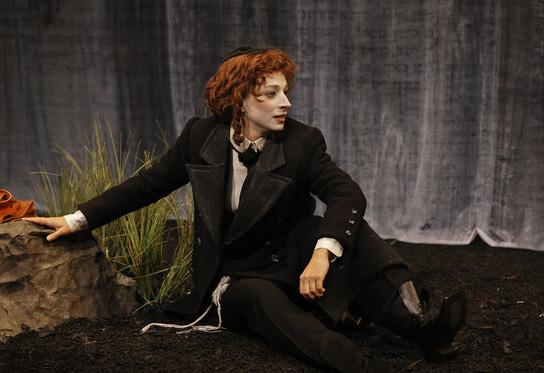
As a fine student, Anshl is invited by Hodes’ father to eat and study in the company of his family, attended to by Hodes. Anshl and Hodes grow close.
Meanwhile, Avigdor – who is still in love with Hodes – insists on regular “debriefs” from Anshl after he has seen Hodes.
Anshl continues to live a lie, but while “loving both Avigdor and Hodes”, dark forces are circling, ones that threaten to expose and shatter Anshl’s idyll.
Mysticism, spirituality and Yiddish culture are the keys to Isaac Bashevis Singer’s original short story, upon which Yentl the play is based. Writers Gary Abrahams (who also directs the work),
Kicking where it hurts
A Premiership at what cost? Indeed, is snaring the feted trophy the be all and end all?
The Cutting Cove Football Club, located in a small coastal town, has never won a flag, but it hired a coach known as The General (Syd Brisbane) who has.
He took on the job three years ago and maintained that he could help the club lift the Cup by his fourth year, 2015, which is about to start.
Last season Cutting Cove dipped out in the Preliminary Final to the team that would go all the way.
Now it has recruited two indigenous boys, the speedy and skillful Jayma (Ngali Shaw) and his older cousin, Sonny (Tibian Wyles), 28, who is not too shabby either.
The latter is married with three young children and could certainly use the money that comes with his signature.
Jayma’s father was a champion footballer, who went walk about when he had a chance to play in a Grand Final.
After an awkward initiation, fellow players appear to embrace the new talent, recognising they could well be the missing pieces to bring the team ultimate glory.
Around heavy training sessions, there is a great deal of horsing around. The testosterone in the room is palpable.
Captain Joe (Ben O’Toole) forms a firm friendship with the Aboriginal lads, inviting them home for a drink and a feed.
But then racism raises its ugly head, courtesy of another player, Woodsy (Eddie
Elise Esther Hearst and Galit Klas have taken the force of Singer’s tale and turned it into compelling theatre.
Unfolding in English and Yiddish (with English surtitles), Yentl is a mighty production in all respects, driven by bravura performances.
Throughout their endeavours, Yentl/ Anshl is egged on by a malevolent force, known as a dybbuk.
With a disquieting cackle, Evelyn Krape assumes that ever present character with distinction.
She is at one with the “muck raker”, who “drives” Yentl’s/Anshl’s journey, revelling in its trajectory.Amy Hack is
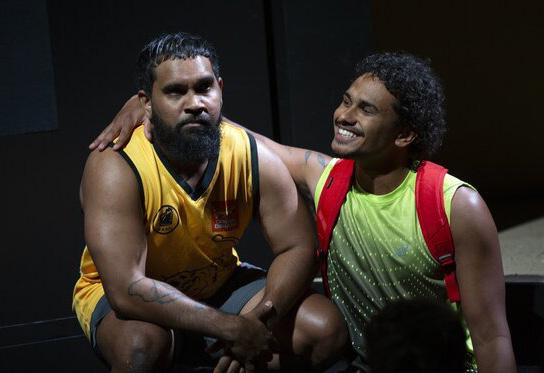
Orton), whose family is a club benefactor.
A cultural awareness course fails to right the ship either.
Thereafter, Adam Goodes war cry dance, directed towards Carlton fans at the SCG during Indigenous Round that year, divides Cutting Cove players.
The play’s title is derived from the number Goodes wore on the back of his jumper.
Woodsy makes another intemperate remark and matters escalate from there.
Any sense of “we’re all in this together”, which is what the coach has called for, is shattered.
equally extraordinary as the always anxious central player.
Yentl’s heart may be in the right place, but she becomes mired in the subterfuge that takes over her life and threatens the wellbeing of those closest to her.
Hack convincingly channels the tortuous dichotomy at the centre of the story, such that we – the audience –care deeply.
Integral to that endeavour is Nicholas Jaquinot’s sterling endeavour as the shattered soul given new hope by Anshl.
His Avigdor is deeply human, troubled and yearning.
Genevieve Kingsford keeps it real as the pure, naïve soul that is Hodes, who would like to marry a worthy man, settle down and have a large family.
Hodes has every reason to believe that in Anshl she has finally found “the one”, but as time passes her frustrations grow.
Hack’s realisation of Hodes ensures that we feel for her, as much as we do for Avigdor and Yentl.
Helping to bring the story to life is Dann Barber’s earthy set design (he is also responsible for costuming).
A tall ladder puts Yentl within touching distance of the Yeshiva. Rocks and tufts of grass complete the picture.
The soundscape by Russell Goldsmith and lighting by Rachel Burke are integral in setting and changing the mood … in creating the air of foreboding central to Yentl. The moral quandary, not to overlook the androgynous nature of the lead, that underpin the piece give it real bite. Truly triumphant, this glorious realisation of Yentl is playing at Merlyn Theatre, at Malthouse Theatre until 17th March, 2024.
part of MTC’s NEXT STAGE Writers’ Program, which helps develop new Australian works.
In this case, MTC commissioned Trawlwoolway playwright Nathan Maynard’s story of Marngrook cousins.
The play is humourous and then incendiary, as laughter is stopped in its tracks.
The piece starts with an explanation of how Australian Rules Football came to be, through a game played by First Nations peoples with a ball made from possum skin. No scores were kept. They played purely
for the fun of it. Maynard has deliberately stirred the pot and lifted the lid of blatant and latent racism.
There is a great deal of boys’ own football culture imbued into the script too, with liberal doses of swearing and sexual innuendo.
As clever and creative as 37 is, it takes a while to really take off … to get to the nitty gritty.
The full extent of the drama isn’t realised until about two thirds of the way through.
By then, the tide of bonhomie has well and truly been lost. Leading from the front in terms of performance is Ngali Shaw, whose mood shifts are integral to the effectiveness of the production.
Shaw’s Jayma goes from happy go lucky to devastated. He is one of 10 in the cast.
Syd Brisbane channels the gusto of your archetypal football coach.
Mitchell Brotz revels in political incorrectness as foot in mouth clubman Gorby. In fact, in his writing, Maynard has made sure we get to know a little about the background and proclivities of each of the players, along with their spirited coach.
37 has been well choreographed in terms of player movement by director and cochoreographer Isaac Drandic, alongside fellow choreographer Waangenga Blanco.
Overall, staging is another highlight, enabling the actors to – at times – bring the action closer to the patrons, which works well.
The piece has much going for it in terms of raising the temperature of the conversation around equality and Indigenous issues.
Ninety-five minutes without interval, 37 is on at Southbank Theatre, The Sumner until 5th April, 2024.
19 the melbourne jewish report | Mar 2024
37 is
YENTL MALTHOUSE THEATRE BY ALEX FIRST
37 SOUTHBANK THEATRE
BY ALEX FIRST
Amy Hack features in the title role in Yentl (photo by Jeff Busby)
From left, Tibian Wyles and Ngali Shaw star in the MTC’s new footy centric production 37, in which racism is front and centre (photo by Pia Johnson)
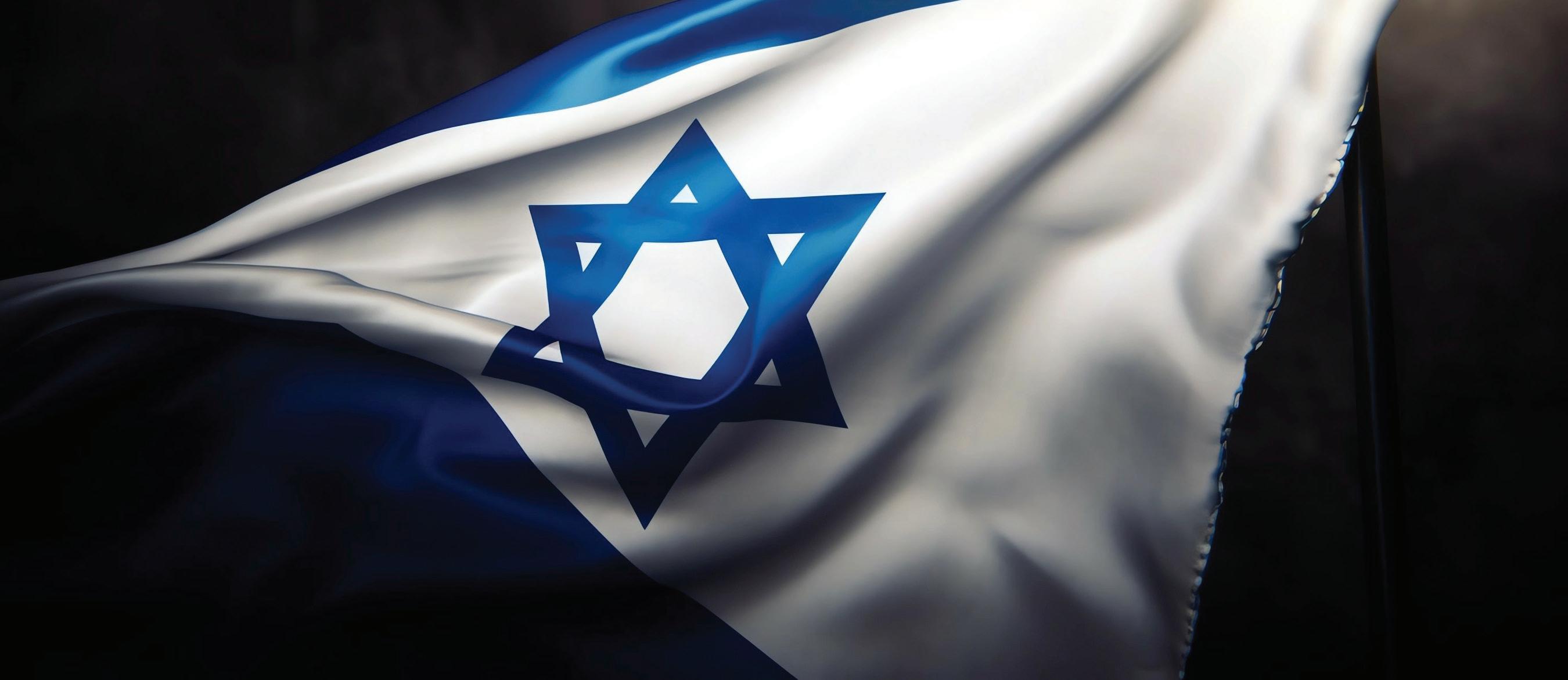







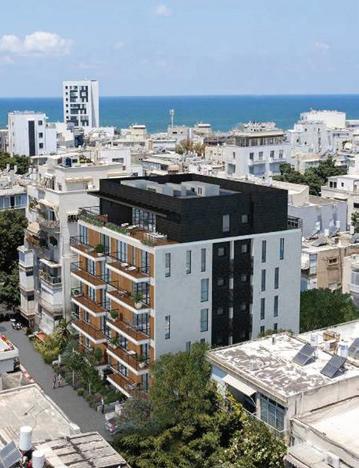






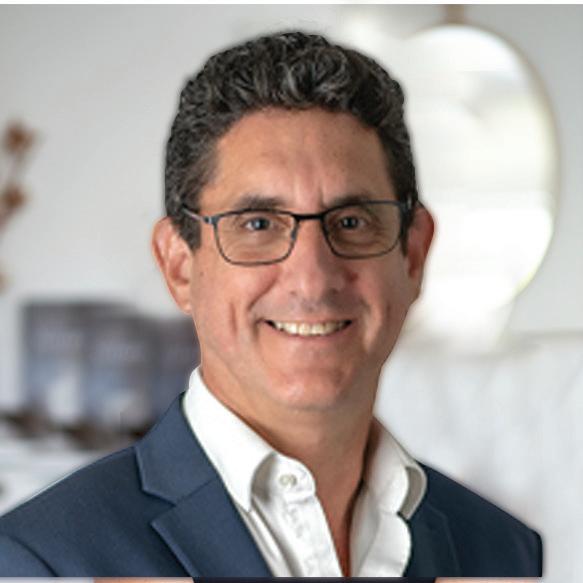
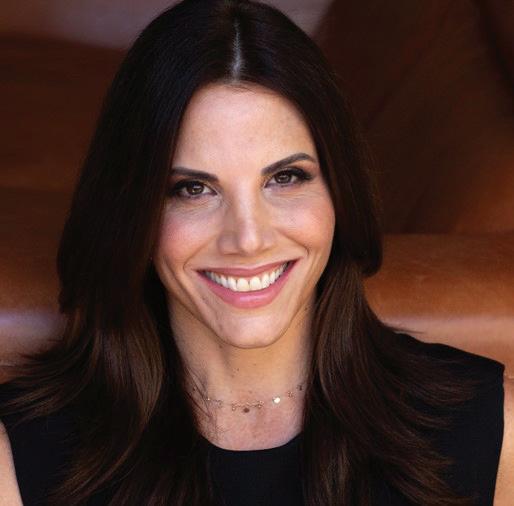
IR YAMIM South Netanya 20% deposit to secure the deal with linear payments until delivery NIS 4.9MIL From YEHEZKEL 44 North Tel Aviv 20% deposit to secure the deal with linear payments until delivery NIS 5.6MIL From RA’ANANA OSTROWSKY STREET Ra’anana NIS 2.95MIL PRE-SALE PRICES From MOSHE SHARET 60 Tel Aviv 10% deposit to secure the deal with linear payments until delivery NIS 3.75MIL HAIFA COMMUNITY HAIFA Haifa Port 20% deposit to secure the deal with linear payments until delivery NIS 1.45 JERUSALEM MEKOR HAIM Jerusalem 10% deposit to secure the deal with linear payments until delivery NIS 3.14MIL SOUTH NETANYA TEL AVIV 20% deposit to secure the deal with linear payments until delivery TEL AVIV PRE-SALE PRICES From PRE-SALE PRICES From PRE-SALE PRICES From OWN Now’s the time to secure your future in Israel Integrity and trust are the foundation of the relationships we’ve built with clients over the past 25 years. We will help you fulfill your dream of owning property in Israel. CONNECT Let’s start a conversation. Our services include: Property Search Sales Administration Legal Services Project Management Interior Design Property Management Scan the QR code Visit our website: www.hold.co.il Contact us: info@hold.co.il +972 58 631 9754 Disclaimer - Specific apartments and prices are subject to availability, and advertised materials are as of the date of advertising. Prices and availability could change and vary from time to time without prior notice. We cannot guarantee a specific apartment or price without signing a registration form. NICCI RAZ Head of Marketing & Sales JULIAN NATHAN Managing Director




 AROUND
AROUND



















































































